20 Creative Writing Activities for Elementary Students
- November 23, 2021
Did you know that November is National Novel Writing Month? While your young learners are probably not ready to write an entire book, this month is a great time to practice creative writing skills with your students. Not only can creative writing be helpful for teaching vocabulary and sentence structure, but it can also encourage students to use imaginative thinkin g —and even find a genuine love of writing!
All of these 20 creative writing activities can be used with elementary school students to practice reading and writing skills. We’ve included options for both early elementary students, who may still be learning to write, and elementary students in upper grades who are ready to work on projects of their choosing.

1. Join the NaNoWriMo organization’s Young Writers Program (YWP) ! Together, your students can work on all sorts of age-appropriate writing challenges and activities throughout the year—including a project of their choice in November!
2. To practice pre-writing skills and collaborating on a project, try these shared writing project activities .
3. If you have any budding cartoonists in your class, this Finish the Comic activity from author Jarrett Lerner can be a great way for younger students to practice writing dialogue.
4. Teach your students about adjectives and writing descriptions with this Popcorn Adjectives activity .
5. Students can learn about creative writing by studying imagery and poetry by established authors. Using this writing worksheet , kids can write out their thoughts about a poem and draw images that stand out to them.
6. To teach creative thinking skills with kindergarteners and early elementary students, try this Mystery Seed writing activity .
7. Get families involved, too! Share these fun home writing activities with your student’s families to help them practice at home.
8. Print out and put together a Writing Jar with tons of creative writing prompts to inspire your students.
9. Check out this resource for even more writing prompts focused on imaginative thinking.

10. Try blackout poetry , an activity that encourages students to make their own beautiful art from a work that already exists.
11. Creative writing isn’t limited to fiction. This narrative writing activity can teach students to write events clearly and in sequence from their real life.
12. For a creative writing project that’s just plain fun, try this Roll a Story activity.
13. This nonfiction project helps children learn to write a letter as they write to a loved one of their choice.
14. If you want to give your students some freedom in choosing a writing assignment, hang up this Writing Prompt Choice Board in your classroom and let them answer whichever prompt they’d like!
15. Encourage students to keep their own journal throughout the year. You could even give them time each morning to respond to a journal prompt .
16. Use this journal page template to help students structure and compile journal entries.
17. These printable Mad Libs can teach children different parts of a sentence while they use their imaginations to create a story.
18. Use this What? So What? Now What? exercise (#6 at the link) to help students structure their creative writing projects.
19. To teach children how to create descriptive sentences, play this Show, Don’t Tell writing activity .
20. If you’d like to hold a month-long creative writing activity, try this 30-Day Writing Challenge for kids .

More education articles

National Poetry Month: Elementary Classroom Activities & Picture Books
Every April, the literary world comes alive with rhythm and rhyme as we celebrate National Poetry Month. For elementary school teachers, this month is an

Bridging the Trust Gap in AI: Ethical Design and Product Innovation to Revolutionize Classroom Experiences
Written by Leah Dozier Walker Executive Vice President of Equity & Inclusion at Waterford.org The integration of Artificial Intelligence (AI) holds tremendous promise across the

24 Activities, Teaching Strategies, and Resources for Teaching Students with Autism
Autism spectrum disorder (ASD) is a neurodivergent condition that affects communication, behavior, and learning. Psychologists use the term spectrum disorder because symptoms and support needs

50 Ways to Celebrate Teacher Appreciation Week

MacKenzie Scott’s Yield Giving Awards Waterford.org a $10 Million Grant
Greater Good Science Center • Magazine • In Action • In Education
Education Articles & More
How creative writing can increase students’ resilience, students can find strength and community in sharing their stories through writing..
Many of my seventh-grade students do not arrive at school ready to learn. Their families often face financial hardship and live in cramped quarters, which makes it difficult to focus on homework. The responsibility for cooking and taking care of younger siblings while parents work often falls on these twelve year olds’ small shoulders. Domestic violence and abuse are also not uncommon.
To help traumatized students overcome their personal and academic challenges, one of our first jobs as teachers is to build a sense of community. We need to communicate that we care and that we welcome them into the classroom just as they are. One of the best ways I’ve found to connect with my students, while also nurturing their reading and writing skills, is through creative writing.
For the past three years, I’ve invited students in my English Language Development (ELD) classes to observe their thoughts, sit with their emotions, and offer themselves and each other compassion through writing and sharing about their struggles. Creating a safe, respectful environment in which students’ stories matter invites the disengaged, the hopeless, and the numb to open up. Students realize that nobody is perfect and nobody’s life is perfect. In this kind of classroom community, they can take the necessary risks in order to learn, and they become more resilient when they stumble.
Fostering a growth mindset

One of the ways students can boost their academic performance and develop resilience is by building a growth mindset. Carol Dweck, Stanford University professor of psychology and author of the book Mindset , explains that people with a growth mindset focus on learning from mistakes and welcoming challenges rather than thinking they’re doomed to be dumb or unskillful. A growth mindset goes hand in hand with self-compassion: recognizing that everyone struggles and treating ourselves with kindness when we trip up.
One exercise I find very useful is to have students write a story about a time when they persevered when faced with a challenge—in class, sports, or a relationship. Some of the themes students explore include finally solving math problems, learning how to defend themselves, or having difficult conversations with parents.
I primed the pump by telling my students about something I struggled with—feeling left behind in staff meetings as my colleagues clicked their way through various computer applications. I confided that PowerPoint and Google Slides—tools (one might assume) that any teacher worth a paperweight has mastered—still eluded me. By admitting my deficiency to my students, asking for their help, and choosing to see the opportunity to remedy it every day in the classroom, I aimed to level the playing field with them. They may have been reading three or four grade levels behind, but they could slap a PowerPoint presentation together in their sleep.
For students, sharing their own stories of bravery, resilience, and determination brings these qualities to the forefront of their minds and helps solidify the belief that underlies a growth mindset: I can improve and grow . We know from research in neuroplasticity that when students take baby steps to achieve a goal and take pride in their accomplishments, they change their brains, growing new neural networks and fortifying existing ones. Neurons in the brain release the feel-good chemical dopamine, which plays a major role in motivating behavior toward rewards.
After writing about a few different personal topics, students choose one they want to publish on the bulletin boards at the back of the classroom. They learn to include the juicy details of their stories (who, what, when, where, why, and how), and they get help from their peers, who ask follow-up questions to prompt them to include more information. This peer editing builds their resilience in more ways than one—they make connections with each other by learning about each other’s lives, and they feel empowered by lending a hand.
In my experience, students are motivated to do this assignment because it helps them feel that their personal stories and emotions truly matter, despite how their other academics are going. One student named Alejandro chose to reflect on basketball and the persistence and time it took him to learn:
Hoops By Alejandro Gonzalez Being good takes time. One time my sister took me to a park and I saw people playing basketball. I noticed how good they were and decided I wanted to be like them. Still I told my sister that basketball looked hard and that I thought I couldn’t do it. She said,“You could do it if you tried. You’ll get the hang of it.” My dad bought me a backboard and hoop to play with. I was really happy, but the ball wasn’t making it in. Every time I got home from school, I would go straight to the backyard to play. I did that almost every day until little by little I was getting the hang of it. I also played with my friends. Every day after lunch we would meet at the basketball court to have a game. … I learned that you need to be patient and to practice a lot to get the hang of things. With a little bit of practice, patience, and hard work, anything is possible.
Originally, Alejandro wasn’t sure why he was in school and often lacked the motivation to learn. But writing about something he was passionate about and recalling the steps that led to his success reminded him of the determination and perseverance he had demonstrated in the past, nurturing a positive view of himself. It gave him a renewed sense of investment in learning English and eventually helped him succeed in his ELD class, as well.
Maintaining a hopeful outlook
Another way to build resilience in the face of external challenges is to shore up our inner reserves of hope —and I’ve found that poetry can serve as inspiration for this.
For the writing portion of the lesson, I invite students to “get inside” poems by replicating the underlying structure and trying their hand at writing their own verses. I create poem templates, where students fill in relevant blanks with their own ideas.
One poem I like to share is “So Much Happiness” by Naomi Shihab Nye. Its lines “Even the fact that you once lived in a peaceful tree house / and now live over a quarry of noise and dust / cannot make you unhappy” remind us that, despite the unpleasant events that occur in our lives, it’s our choice whether to allow them to interfere with our happiness. The speaker, who “love[s] even the floor which needs to be swept, the soiled linens, and scratched records,” has a persistently sunny outlook.
It’s unrealistic for students who hear gunshots at night to be bubbling over with happiness the next morning. Still, the routine of the school day and the sense of community—jokes with friends, a shared bag of hot chips for breakfast, and a creative outlet—do bolster these kids. They have an unmistakable drive to keep going, a life force that may even burn brighter because they take nothing for granted—not even the breath in their bodies, life itself.
Itzayana was one of those students who, due to the adversity in her life, seemed too old for her years. She rarely smiled and started the school year with a defiant approach to me and school in general, cursing frequently in the classroom. Itzayana’s version of “So Much Happiness” hinted at some of the challenges I had suspected she had in her home life:
It is difficult to know what to do with so much happiness. Even the fact that you once heard your family laughing and now hear them yelling at each other cannot make you unhappy. Everything has a life of its own, it too could wake up filled with possibilities of tamales and horchata and love even scrubbing the floor, washing dishes, and cleaning your room. Since there is no place large enough to contain so much happiness, help people in need, help your family, and take care of yourself. —Itzayana C.
Her ending lines, “Since there is no place large enough to contain so much happiness, / help people in need, help your family, and take care of yourself,” showed her growing awareness of the need for self-care as she continued to support her family and others around her. This is a clear sign of her developing resilience.
Poetry is packed with emotion, and writing their own poems allows students to grapple with their own often-turbulent inner lives. One student commented on the process, saying, “By writing poems, I’ve learned to be calm and patient, especially when I get mad about something dumb.” Another student showed pride in having her writing published; she reflected, “I feel good because other kids can use it for calming down when they’re angry.”
To ease students into the creative process, sometimes we also write poems together as a class. We brainstorm lines to include, inviting the silly as well as the poignant and creating something that represents our community.
Practicing kindness
Besides offering my students new ways of thinking about themselves, I also invite them to take kind actions toward themselves and others.
In the music video for “Give a Little Love” by Noah and the Whale, one young African American boy—who witnesses bullying at school and neglect in his neighborhood —decides to take positive action and whitewash a wall of graffiti. Throughout the video, people witness others’ random acts of kindness, and then go on to do their own bit.
“My love is my whole being / And I’ve shared what I could,” the lyrics say—a reminder that our actions speak louder than our words and do have an incredible impact. The final refrain in the song—“Well if you are (what you love) / And you do (what you love) /...What you share with the world is what it keeps of you”—urges the students to contribute in a positive way to the classroom, the school campus, and their larger community.
After watching the video, I ask students to reflect upon what kind of community they would like to be part of and what makes them feel safe at school. They write their answers—for example, not being laughed at by their peers and being listened to—on Post-it notes. These notes are used to create classroom rules. This activity sends a message early on that we are co-creating our communal experience together. Students also write their own versions of the lyrics, reflecting on different things you can give and receive—like kindness, peace, love, and ice cream.
Reaping the benefits
To see how creative writing impacts students, I invite them to rate their resilience through a self-compassion survey at the start of the school year and again in the spring. Last year, two-thirds of students surveyed increased in self-compassion; Alejandro grew his self-compassion by 20 percent. The program seems to work at developing their reading and writing skills, as well: At the middle of the school year, 40 percent of my students moved up to the next level of ELD, compared to 20 percent the previous year.
As a teacher, my goal is to meet students where they’re at and learn about their whole lives. Through creative writing activities, we create a community of compassionate and expressive learners who bear witness to the impact of trauma in each others’ experiences and together build resilience.
As a symbol of community and strength, I had a poster in my classroom of a boat at sea with hundreds of refugees standing shoulder to shoulder looking skyward. It’s a hauntingly beautiful image of our ability to risk it all for a better life, as many of my ELD students do. Recognizing our common humanity and being able to share about our struggles not only leads to some beautiful writing, but also some brave hearts.
About the Author

Laura Bean, M.F.A. , executive director of Mindful Literacy, consults with school communities to implement mindfulness and creative writing programs. She has an M.F.A. in Creative Writing and presented a mindful writing workshop at Bridging the Hearts and Minds of Youth Conference in San Diego in 2016.
You May Also Enjoy

This article — and everything on this site — is funded by readers like you.
Become a subscribing member today. Help us continue to bring “the science of a meaningful life” to you and to millions around the globe.
- Skip to primary navigation
- Skip to main content
- Skip to primary sidebar
Teaching Expertise
- Classroom Ideas
- Teacher’s Life
- Deals & Shopping
- Privacy Policy
51 Creative Writing Activities For The Classroom: Comics, Prompts, Games, And Pretend Play
January 4, 2024 // by Milka Kariuki
Creative writing can be tough for learners of any age. From knowing where to start to establishing the vocabulary to develop their story, there are a bunch of different skills they’ll need to perfect their creative writing pieces. There are so many creative writing activities out there, but which ones are best for your kiddos? Our list of 51 creative writing activities is the perfect place to start looking if you’ve got a creative writing unit coming up! Read on and see which ones might grab your little writers’ attention!
1. Make Your Own Comic Books
We bet your kiddos just love comic books! Let them create their very own in the style of the super popular Diary of a Wimpy Kid books! Encourage your students to come up with their own plot, dialogue, and illustrations to spark their creativity. Even your most reluctant writers will love this fun activity!
Learn More: Puffin Schools
2. Mad Libs
Using Mad Libs is a super popular way to develop your little creative writers! Use these free printables to get their creative juices flowing as they try to come up with words to fill the gaps to create weird and wonderful new stories. The best thing is that you can use these printables as many times as you like as their answers will be different each time!
Learn More: Teacher Vision
3. Flash Fiction
Flash fiction is a fantastic way to get your kiddies writing creatively while keeping things short and sweet! Use the range you prompts included in this resource to challenge them to write a creative story in less than 100 words. Flash fiction is amazing because your students won’t be overwhelmed by a huge writing task and it also means that your more confident writers will need to focus on the quality of their work, not the quantity!
Learn More: TES
4. Write a Story Based on the Ending
Test your students’ creativity by providing them with writing prompts that start at the end! In backward story writing, your budding writers will need to plan and pen a story that eventually leads to the ending you give them. This idea is a fantastic way to turn your traditional creative writing lesson on its head and in many ways take the pressure off your kids, as ending their stories is often the most difficult part for them!
Learn More: Teachers Pay Teachers
5. Found Poetry
Your learners will love this fun and creative found poetry activity. You can encourage them to collect words or a group of words from a favorite story or song then write them on a piece of paper or cut them out of a printed page. The overall goal is to have them rearrange the words differently to make an interesting poem with a unique writing style or genre!
Learn More: Homeschooling Ideas
6. Picture Dictionary
A picture dictionary is a brilliant way to support every member of your younger elementary class in their creative writing. The words paired with pictures give your writers a ‘dictionary’ that they can use pretty independently, so your less confident writers or non-native English-speaking students can still access your writing lessons!
Learn More: Twinkl
7. Creative Journal Writing
Why not start a creative journal with your kiddos? Have them engage in daily journaling activities by giving them a different creative prompt each day. For instance, write a story about what would happen if dogs took over the world or what would you do if you were the security guard at a zoo and someone stole an animal? The fun is never-ending with these prompts!
Learn More: Think Written
8. Roll a Story
Roll-a-Story is one of the best ways to help any of your kids who are suffering from a bout of writer’s block! They’ll roll the dice to discover the character, setting, and problem for their story then set to work weaving their creative tale! It could be a story about a wise doctor being chased by a mysterious creature in a casino, or maybe a rich artist losing their wallet in a library. Then it’s up to your students to fill in the gaps!
Learn More: TPT
9. Pass-it-on Story Writing
There’s no telling quite where this fun writing game will end up! Start by writing the first sentence of a story on a piece of paper then pass it around your class, having your kids come up with a sentence that continues the story. The paper is then passed around the whole class until every student has contributed. Finally, once it makes its way back to you, read out your collaborative story to the whole class!
Learn More: Minds In Bloom
10. Picture Writing Prompts
Creative writing prompts activities test not only your little ones’ imaginations but also their ability to craft a story and dialogue from that. Display an intriguing picture prompt for your class and have a discussion about it, recording their ideas. You could discuss what the person or animal in the picture is doing or what they’re thinking, where they think the picture was taken, and much more. They can use your collective notes to inspire their story!
Learn More: Pandora Post
11. What’s the Question?
What’s the Question is a simple, yet super engaging game that requires your young learners to think creatively. Spark their creativity by writing an answer on the whiteboard such as “the moon would explode,” and task your kiddos with coming up with a question to match it. There’ll be lots of laughs as everyone shares what they came up with!
Learn More: That Afterschool Life
12. Creative Writing Printables
This website is absolutely full of quick and fun graphics for children that’ll encourage their creative writing! The cute graphics and simple directions make it an easy bellringer activity for your writing class. Just print out some of these cool sheets and let your students get creative as they write thank-you notes to helpful heroes or finish little cartoon comics!
Learn More: Jarrett Lerner
13. Paint Chip Poetry
Nothing says creative writing quite like figurative language! Grab some of these free paint swatches from your local home improvement store and have your students create metaphors about their chosen color! We love this low-prep activity as once your kids have finished their poems, they’re a ready-made multi-colored display that’ll brighten the walls of your classroom!
Learn More: Fabulous In Fifth
14. Story Storm Activities
Once again, these Jarrett Lerner activities do not disappoint! Your students will have a blast pretending they are the principal for a day and they’ll get to create their very own rules for the school. Not only will this be an engaging writing exercise that we’re sure they’ll love getting creative with, but it also challenges children to think about why rules in school are important.
Learn More: Tara Lazar
15. Story Bag
Story bags are a fantastic way to destroy any kind of writer’s block! Grab an assortment of random objects from your home or classroom and pop them into the story bag. Next, gather your students around and pull out all the objects in the bag. Can they then write a story connecting all the items? Be sure to leave time to let them share their stories at the end of the lesson!
Learn More: Life Hack
16. Change the Ending
An easy way to ease your kiddos into the writing process is by having them rewrite part of a story. Grab their favorite read-aloud, and challenge them to come up with a new ending! They’ll need to finish the story in a way that makes sense, but aside from that, they can be as creative as they like! Your reluctant readers will like this one as much of the work on setting and characters has already been done!
Learn More: Make Beliefs Comix
17. Plot Twist Writing Prompts
BUT WAIT – there’s a twist…This fun writing practice is perfect for older middle or high school but could also be simplified for younger students. Write these twist prompts on notecards and have your kids draw one each before letting them go off and write a story around their chosen twist! They’ll be eager to share their finished work with classmates at the end. After all, who doesn’t love a good plot twist?
Learn More: Pinterest
18. Craft Box Craft
Every kid loves the book The Day the Crayons Quit for its creative narrative about this familiar box of coloring supplies! This extension activity rolls art and creative writing into one! Your students will have fun coming up with dialogue for each of the different crayons and you could even make it into a fun display for your classroom walls!
Learn More: Buggy And Buddy
19. Dialogue Pictures
Personalizing writing activities always makes it more engaging for kids! Print out a picture of yourself with a blank speech bubble, and model how to add in some dialogue. Then, let your kiddos practice speech bubbling with a photo of themselves, a pet, or a favorite celebrity, and have them come up with some interesting things for each of their subjects to say!
Learn More: SSS Teaching
20. Figurative Language Tasting
Your students will be creative writers in no time after practicing their figurative language with food tasting! Not only do tasty treats make this activity incredibly fun, but it also brings the writing process of metaphors and hyperbole to life. Just give each of your kids a few pieces of candy or snacks, and have them practice writing figures of speech relating to each one! They’ll have the words on the tip of their tongue- literally!
Learn More: It’s Lit Teaching
21. Explode the Moment
One of my favorite writing concepts as a teacher is ‘exploding the moment’. This method is perfect for showing your kiddies that even the smallest moment can be turned into an imaginative, descriptive story! Start by having them brainstorm some ideas and expand on tiny memories like losing a tooth, getting a pet, or making a winning goal in a soccer game!
Learn More: Raise The Bar Reading
22. Round-Robin Storytelling
Round-robin storytelling is the perfect collaborative creative writing activity! This one can be done verbally or in writing, and it challenges your class to build a story using a given set of words. They’ll have a fun and challenging time figuring out how to incorporate each piece into one cohesive story.
Learn More: Random Acts Of Kindness
23. Acrostic Poems
Acrostic poetry is one of the least intimidating creative writing exercises as there are no rules other than starting each line with the letter from a word. Challenge your kiddies to use each letter in their name to write lines of poetry about themselves, or they could choose to write about their favorite food or animal!
Learn More: Surfin’ Through Second
24. Sentence Sticks
This exercise requires minimal prep and can be used in so many different ways. All you’ll need are some craft sticks in which you will write sentences with blanks and word banks. Your young writers can then pull a stick and fill in the blanks to practice creative thinking! Task them with a different goal each time; can they make the sentence silly or sad for example?
Learn More: Liz’s Early Learning Spot
25. Conversation Prompts
These fun prompts require your kids to think creatively and answer a range of interesting questions. They’ll be excited to write stories about waking up with a mermaid tail or describe what is in a mystery package delivered to their doorstep! These creative prompts are perfect for bellringers or transitions throughout the school day!
Learn More: Twitter
26. Pretend Play Writing
Do you remember playing with fake money and fake food when you were younger? This idea takes it a step further by incorporating some writing practice! All you’ll have to do is print the templates for dollars, shopping lists, and recipes then let your little learners have fun with these play-pretend writing ideas!
Learn More: Prekinders
27. Question Cubes
Your class will be on a roll with these amazing question cubes! Whether the cubes are used for responding to a story, brainstorming the plot of a story, or practicing speech and listening, they are an easy, affordable tool for your little readers and writers! You can snag some foam dice at the dollar store and hot glue questions on each side to spark some creative writing ideas for your class.
Learn More: A Love 4 Teaching
28. Balderdash
Not only is Balderdash an addicting board game, but it can even be used in the classroom! Your little learners will have a blast as they create made-up, imaginative definitions for words, important people, and dates. Whoever guesses the real answer out of the mix wins the points!
Learn More: EB Academics
29. Two Sentence Horror Story
This creative writing exercise is best for older students and would be a great one to try out around Halloween! You’ll be challenging your learners to write a story that runs chills up their readers’ spines, but there’s a twist…the story can only be two sentences long! Your kiddos will love writing and sharing their writing to see who can come up with the spookiest short story!
30. Telephone Pictionary
Another game that your kids will be begging to play over and over again is telephone pictionary! The first player will write down a random phrase, and the next person must draw their interpretation of the phrase. The third player will write what they think the picture is and so on!
Learn More: Imagine Forest
31. Consequences
You need at least two players for this fun creative writing game. Each pair or group of kids will start by having one person write a random phrase and conceal it by folding the paper. Then, they pass it to the next student to fill in the blank using the prompt. Once all the blanks are filled in, let them unfold the paper and get ready to reveal some seriously silly stories!
32. Story Wands
Story wands are a fun way to have your kids respond to stories and study what makes something their favorite. Responding to what they’re reading is a super helpful exercise in preparing them for creative writing as it allows your students to connect to their favorite stories. By figuring out what elements make stories great, this is sure to help them in their own creative writing assignments!
Learn More: Little Lifelong Learners
33. The Best Part of Me
Probably my favorite creative writing activity, this one is infused with social-emotional learning and self-esteem building! Let your students get to choose their favorite physical characteristics about themselves; whether it be their eyes, hands, feet, etc. Then, they take a picture to attach to their written reasoning! Make sure to boost the creative element of this writing task by encouraging your learners to use a bunch of adjectives and some figurative language!
Learn More: Sarah Gardner Teaching
34. Me From A-Z
Challenge your kiddos to get creative by coming up with 26 different words to describe themselves! Me From A-Z gives your students the opportunity to explore who they are by coming up with words describing them in some way using each letter of the alphabet. Why not let them decorate their lists and turn them into a display celebrating the uniqueness of each of your class members?
35. How to Make Hot Chocolate
How-to writing is a great way to get the creative writing wheels turning in your kiddies’ brains! They’ll have a fun time coming up with their instructions and ways to explain how to make hot chocolate! Do they have a secret recipe that’ll make the best-ever hot cocoa!? Once they’ve written their instructions, be sure to try them out and do a taste-test of their recipes!
Learn More: Teacher Mama
36. Give Yourself a Hand
Hands up if you love this idea! For this creative writing activity, have your little ones trace their hand on a piece of paper and decorate it with accessories. Then, encourage them to write a list of all the different things they do with their hands all over their tracing! This is a great warm-up to get the creative gears turning.
Learn More: Write Now Troup
37. Word Picture Poem
A word picture poem is a fantastic way to challenge your kids to write descriptive poetry about a common object! Your little poets will learn to find beauty in ordinary things and strengthen their sensory language skills and their vocabulary. For some added fun, you can even task them with writing a short story about the item as well! The results are sure to be fun to read!
Learn More: Teaching With Terhune
38. Shape Poem
Shape poems are some of the most creative poetry as they combine words and art into one! First, your young poets can choose an object to use as their muse and lightly trace an outline onto some paper. Then, they’ll write words along the outlined shape in the form of a poem that describes the object! The result is a bunch of fun and striking poems that’ll look great displayed around your classroom!
39. Crazy Hair Poetry
Here’s another one that combines writing and art! Start by guiding your kiddos in drawing a self-portrait then adding some crazy hair by blowing watercolor paints around! After the paint dries, have your kids come up with a short but creative poem describing their hair art.
Learn More: Grade School Giggles
40. Fingerprint Poetry
Nothing is more creative than getting your kiddies to let down the barriers in their mind and tap into their stream of consciousness! Show them how to pick a topic and then let their words flow straight from mind to paper in a swirling pattern. This fingerprint idea can be used for a get-to-know-you activity as well!
Learn More: Kristen Dembroski
41. Doggie Haiku Poems
Put a fun twist on classic haiku poetry! Your students will have a paw-some time writing three-line poems about dogs which they can then illustrate afterwards! Before starting the activity, you can use Dogku by Andrew Clements as a read-aloud to get your class hooked on this idea!
Learn More: Teaching Fourth
42. Fractured Fairy Tale
Ever wondered if the Big Bad Wolf was framed? Or if Sleeping Beauty was actually a snorer? Your writers in training will have a fun time taking a classic fairytale and putting their own spin on it! Following five simple steps, your kids will be funky fairytale authors in no time!
43. Letter Writing
These creative letter-writing prompts are sure to boost your kiddies’ imaginative writing skills! Whether writing to a pen pal or a favorite celebrity, letter writing is a great way to practice handwriting, word flow, descriptive language, and communicating all rolled into one! Have your writers grab their pencils and let the creativity flow as they write fun response letters to these prompts!
44. Hersey’s Kisses Similes
Teach sensory language and similes by connecting this tasty treat with the sense of taste! Your students will have a lovely time brainstorming how chocolate connects to each of our senses and applying that knowledge by writing some sweet similies! What a fantastic way to teach them how to use these essential creative writing tools!
Learn More: Teacher By The Beach
45. Sensory Poetry
Another great way to teach sensory details is to have your learners write poems about their favorite foods! Task them with writing a line for each sense to describe the food! Everyone will be hungry after this creative writing lesson so it might be a good idea to have some snacks on hand!
Learn More: Mrs. Tice’s Class
46. Season Personification
Each season of weather has an array of characteristics making this the perfect activity to practice personification in creative writing! Allow your little writers to choose a season to write about as if it were a person with human characteristics. Winter is a no-brainer! It’s Elsa!
Learn More: Write Shop
47. Class Book of Character Traits
To be creative writers, your kids need to know how to create realistic characters for their stories. For this class book, you’ll start by giving each student two opposing character traits. Next, have them demonstrate these traits by illustrating two characters and displaying them through dialogue!
Learn More: Crafting Connections
48. Socialgrams
With Instagram being all the rage these days, your kiddos will have a fun time creating a ‘socialgram’ on paper! Challenge them to create a descriptive and engaging caption to go along with their “photo” in the post. Then, classmates can comment on each other’s work!
Learn More: Breezy Special Ed
49. Story Introduction Worksheets
Creative writing worksheets are a simple, minimal-prep tool to use in your creative writing units. Print out a variety of options, and have your kids practice their skills by finishing imaginative story introductions. By giving them a place to start their story, you can really take the pressure off your kids which will help ease them into the creative writing process!
Learn More: Lanternfish ESL
50. Dialogue Worksheets
Here’s another low-prep option for the last-minute planners! Pre-written dialogue can help guide the mood of the story and allow your kiddies to just focus on filling in the characters’ actions. This is also a great way to model how dialogue is spaced out and balanced in a story!
Learn More: ESL Writing Worksheets
51. Character Trait Posters
In this personalized character trait activity, your students will create a poster of themselves and label it with a bunch of different character traits. Descriptive, interesting characters are what make a story captivating, so this is a great introduction to understanding characters and their physical as well as personality traits! This is an activity that’s sure to help them build a strong foundation for their creative writing skills to build from!
Learn More: Life In First Grade
15 Essential Resources for Elementary Writing Instruction

Authored by Janine Henley, this blog post offers 15 essential resources for elementary educators to enhance their writing curriculum and instruction. From webinars to books and podcasts, each resource is carefully selected to empower teachers, literacy coaches, and reading specialists in cultivating proficient writers in their classrooms. Dive into this curated collection of resources to unlock writing success, strengthen foundations, and foster creativity among young learners.
Table of Contents
- Articles, Guides & Research
Books : Effective Writing Instruction
- In “Keys to Early Writing,” you’ll find a comprehensive guide aligned to Keys to Literacy’s professional development modules. This resource is designed to support educators with an introduction to writing instruction, detailed instructional practices, real classroom examples, and engaging professional learning activities. The book also features numerous reproducible templates that you can use with your own students.
- The Institute of Education Sciences’ “Teaching Elementary School Students to Be Effective Writers” guide offers four insightful recommendations to enhance elementary students’ writing skills. With detailed implementation steps and solutions for common challenges, this guide is a must-have for teachers, literacy coaches, and educators dedicated to improving their students’ writing proficiency. Explore this resource to learn more about effective elementary writing instruction!
Articles, Guides & Research : Elementary Writing Instruction
- 826 Writing Reports aims to ignite the power and joy of writing, envisioning a world where every student has access to quality writing education. Their dedication to creating more writing spaces and empowering teachers resonates deeply with our own commitment to literacy. 826 is working towards a future where writing flourishes in every classroom, enriching the lives of students and educators alike. The 826 Writing Reports explore the current state of writing instruction and research based best practices that will help move the needle on student achievement.
- In the latest edition of “Best Practices in Writing Instruction,” experts dive into strategies to help create a supportive writing environment and strategies to teach writing for different purposes. There are also several chapters that explore how to support students in honing specific skills—from handwriting and spelling to sentence construction and the writing process. This definitive text translates new research into effective guidelines for teaching writing across grades K–12, offering educators practical insights and real classroom examples to cultivate a comprehensive, high-quality writing program.
- The Reading League’s Curriculum Evaluation Tool provides educators with a valuable resource to assess the alignment of curricula with evidence-based practices in reading instruction. With the Curriculum Evaluation Guidelines (CEGs) Reviewer Workbook, curriculum review teams can effectively rate and record evidence of potential red flags. It’s crucial to ensure that instructional practices align with the scientific evidence base of how children learn to read, particularly in Tier I instruction. The guidelines are meticulously designed to identify any non-aligned practices, or “red flags,” across key areas such as Word Recognition, Language Comprehension, Reading Comprehension, Writing, and Assessment
- In the article “5 High-Impact Writing Strategies for the Elementary Grades,” educators are encouraged to broaden their perspective on writing instruction beyond traditional storytelling and informational pieces. While these are undoubtedly valuable, the article emphasizes the importance of foundational transcription skills, such as handwriting. The article also discusses integrating writing across all content areas to deepen students’ understanding and prepare them as proficient writers. By incorporating writing into various subjects and providing opportunities for student choice, educators can nurture a strong foundation for young writers to excel in authoring texts across genres.
- In this blog post, I’ll be diving into The Writing Rope Book Club: A Spotlight on Explicit Writing Instruction. As both a member of the Heggerty team and an experienced educator myself, I’ll share insights and strategies to enhance writing instruction in elementary classrooms. Join me as I explore the steps to starting The Writing Rope book club and provide practical tips to strengthen your teaching practice.
- In this insightful blog post, Dr. Gary Troia dives into the realm of effective writing instruction, offering invaluable insights for educators. As we explore “A Guide to Effective Writing Instruction,” Dr. Troia seamlessly connects structured literacy practices with the art of teaching writing, providing practical strategies to enhance instruction. Gain a deeper understanding of the essential elements of effective writing instruction and learn how to integrate them seamlessly into our classrooms.
Webinars : Improving Student Writing Skills in the Classroom
- In this insightful webinar, Margie B. Gillis, Ed.D, a nationally recognized literacy expert, discusses the critical role of syntactic knowledge in student comprehension. As we explore the Syntax Attitude Educator session, Margie shares valuable research insights and practical strategies for educators to teach students how to understand the functions of sentence parts within text. During the webinar, Margie’s expertise shines through as she equips educators with evidence-based practices to enhance reading comprehension in the classroom. When we focus on syntax, we help strengthen not only our students’ reading comprehension but their written composition skills as well. This webinar will help equip you with the knowledge of sentence parts so you can teach syntax effectively!
- The AIMS Institute 2024 Symposium brings together some of the brightest minds in literacy education to share valuable insights and practical strategies. From exploring the reading-writing connection to delving into considerations for English Learners and Emergent Bilingual Students, this symposium covers a wide range of topics crucial to elementary education. With presentations from experts like Dr. Sonia Cabell and Dr. Devin Kearns, you’ll gain valuable tools and techniques to enhance your instruction and support student learning. Plus, with presentation slides generously shared by the presenters, you’ll have access to a wealth of resources to further your professional development.
- The 2022 Literacy Symposium: Writing Strand is a treasure trove of insights and strategies to enrich your teaching practice. Led by esteemed experts like Joan Sedita and Dr. Anita Archer, this symposium covers a wide range of topics crucial to fostering literacy development in your students. From exploring the importance of summarizing for comprehension and writing skills to delving into effective spelling instruction and syntax comprehension, each session offers practical suggestions and research-based approaches that you can implement in your classroom. Whether you want to enhance your students’ writing skills or deepen their comprehension abilities, this symposium provides valuable tools and techniques to support your journey as an educator.
- The webinar titled “An Introduction to a Simple View of Writing” presented by Dr. Murray and Dr. Beveren Currie provides a comprehensive overview of the simple view of writing, offering insights into its components and implications for instruction. Through engaging discussions and practical examples, attendees gain a deeper understanding of the transcription and composition skills that are essential to become a proficient writer. Delivered as part of the PATTAN Literacy Symposium, this session equips educators with essential knowledge to enhance writing instruction and support student success in literacy.
- “Navigating Writing Instruction in the Elementary Classroom,” hosted by Alisa VanHekken, Chief Academic Officer at Heggerty, this webinar promises valuable insights and strategies to enhance our approach to teaching writing. It explores transformative practices and addresses key questions shaping writing education today. It’s a great resource for anyone looking to inspire a new generation of confident and creative young writers.
Podcasts: Teacher-Friendly Podcasts Spotlighting Effective Writing Instruction
- Dive into the fascinating world of writing science with Pedagogy Non-Grata’s latest podcast episode. Join the round table discussion featuring esteemed writing experts Dr. Steve Graham, Dr. Amy Rouse Gillespie, Joan Sedita, and Lyn Stone as they discuss the best practices of effective writing instruction. Gain valuable insights and practical strategies from these leading voices in education as they explore the latest research that fosters writing proficiency. Whether you’re an educator, parent, or writing enthusiast, this episode offers invaluable knowledge to enhance your understanding of the science behind writing.
- In this podcast episode, “Writing Your Way to Better Reading,” host Susan Lambert engages in a thought-provoking conversation with renowned expert Dr. Steve Graham about the intricate relationship between writing and literacy. Drawing from his extensive experience, including his role in chairing the What Works Clearinghouse Practice Guides on writing, Dr. Graham shares valuable insights into supporting student writing, overcoming obstacles in writing development, and emphasizing the significance of teaching handwriting skills.
KeystoLiteracy.com. (n.d.). Training Book: Keys to Early Writing, 2nd Edition (2020). Retrieved from https://keystoliteracy.com/product/training-book-keys-to-early-writing-2nd-edition-2020/
Institute of Education Sciences. (n.d.). Foundational Skills to Support Reading for Understanding in Kindergarten Through 3rd Grade (NCEE 2016-4008). Retrieved from https://ies.ed.gov/ncee/WWC/PracticeGuide/17
826 National. (n.d.). Retrieved from https://826national.org/
Graham, S., MacArthur, C. A., & Hebert, M. (n.d.). Best Practices in Writing Instruction: Second Edition. Guilford Press. Retrieved from https://www.guilford.com/books/Best-Practices-in-Writing-Instruction/Graham-MacArthur-Hebert/9781462537969
The Reading League. (n.d.). Curriculum Evaluation Guidelines. Retrieved from https://www.thereadingleague.org/curriculum-evaluation-guidelines/
Mosby, A. (2024, March 15). 5 High-Impact Writing Strategies for the Elementary Grades. Edutopia. Retrieved from https://www.edutopia.org/article/high-impact-writing-strategies-elementary-students
Henley, J. (2024, March 27). The Writing Rope Book Club: A Spotlight on Explicit Writing Instruction [Blog Post]. Retrieved from https://heggerty.org/resources/blog-post/the-writing-rope-book-club/
Troia, G. A. (2023, November 2). A Guide to Effective Writing Instruction [Blog Post]. Retrieved from https://heggerty.org/resources/blog-post/a-guide-to-effective-writing-instruction/
PaTTAN Literacy Symposium. (2022, August 26). The Syntax Attuned Educator [Webinar]. YouTube. Retrieved from https://www.youtube.com/watch?v=JE1LFsDS7j8
AIM Institute. (2024, March 11). 2024 Symposium Recordings: The Intersection of Reading and Writing [Conference Session]. Retrieved from https://institute.aimpa.org/programs-research/research-to-practice-symposium/2024symposium/2024recordings?utm_campaign=2024%20Symposium&utm_medium=email&_hsmi=299155430&_hsenc=p2ANqtz-_2Mwhxo4h2zTp5A1zJMW9we3d_o-BvaIw8nMYzNk-OCNhGiOM6mH5LIQNYXm-OyNLmYi5kYMfhLwqaMv1rBboVrYldfQ&utm_content=299155430&utm_source=hs_email
PaTTAN Literacy Symposium. (2022). Writing Strand: 2022 Literacy Symposium [Webinar Collection]. Retrieved from https://sites.google.com/pattan.net/pattan-literacy/2022-pattan-literacy-symposium/writing-strand?authuser=0
Murray, J., & Beverine-Curry, L. (2020, July 13). An Introduction to a Simple View of Writing [Webinar]. Retrieved from https://www.youtube.com/watch?v=G4oX81uJwmQ
VanHekken, A. (Host). (n.d.). Navigating Writing Instruction in the Elementary Classroom [Webinar]. Heggerty. Retrieved from https://heggerty.org/downloads/webinar-navigating-writing-instruction-in-the-elementary-classroom/
The Science of Writing Round Table. (n.d.). [Audio podcast episode]. In Apple Podcasts. Retrieved from https://podcasts.apple.com/us/podcast/the-science-of-writing-round-table/id1448225801?i=1000647603501
Graham, S. (Guest). (n.d.). Writing your way to better reading [Audio podcast episode]. In Science of Reading: The Podcast (Season 7, Episode 8). Amplify. Retrieved from https://amplify.com/episode/science-of-reading-the-podcast/season-7/episode-8-writing-your-way-to-better-reading/

Janine Henley, M.Ed
Janine is currently a Literacy Specialist at Heggerty. Before joining Heggerty, she served as a classroom teacher, reading specialist, and literacy coach. Janine holds a Master’s degree in Elementary Education from the University of Mary Washington and earned her reading specialist endorsement from the University of Virginia. Trained in Orton Gillingham, she has worked with diverse grade levels, spanning from K-8, showcasing her passion for education.
Leave a Comment Cancel Reply
- Heggerty Phonemic Awareness Curriculum
- Bridge to Reading
- Bridge to Writing
- Kindergarten
- First Grade
- Second Grade
- Free Webinars
- Product Samples
- Curriculum Resources
- Assessments
- Australian Assessments
- National & State Standards
- Parent Newsletters
- Case Studies
British Council
How to help young english language learners love writing, by roseli serra, 23 august 2014 - 15:48.

Karen, licensed under CC BY 2.0 and adapted from the original .
Roseli Serra , winner of the TeachingEnglish monthly blog award , writes about how to encourage children learning English to love writing in English too.
One of the biggest challenges teachers have faced in the classroom has to do with writing. Usually students do not want to write, because they have never been encouraged to do it or to enjoy it. It’s worth remembering that most people never write anything of any length in their daily lives, or anything using a pen and paper, or without using a spellchecker. But this is often what we ask our students to do in English.
Writing, like all other aspects of language, is communicative. In real life, we may write e-mails, lists, notes, cover letters, reports, curricula, assignments, or essays. Some of us write articles or work on blogs, forums and websites. All of these writing tasks have a communicative purpose and a target audience. In the English language classroom, writing often lacks that communicative purpose. However, there are ways to make the writing we do with learners more communicative and pleasurable.
I have noticed that early on, children in language schools often enjoy the beginning stages of writing, when they are learning the letters or characters. Literate young learners are very willing to work at tracing letters and words, and are eager to learn how to print their names, the names of their brothers, sisters, pets, toys and classroom objects. It’s this interest in writing that we want to maintain as our students continue to develop their English writing skills. Yet writing can be a challenging skill for children to learn. By its nature, writing is often a solo activity, done silently, involving effort and taking a lot of time. Writing well is difficult, even for very young learners. However, writing in any language can be so much fun!
So what can we do to help children retain their early interest in writing, while they develop skills and confidence? First, students need a basic foundation and understanding of the spoken language in order to be able to write in English. For example, they need to know how to identify and talk about objects and people in English in order to write something about them.
Age plays a crucial role in what we teach and how we teach it. A young learner class is different from an adult or teenager class in terms of the learners’ needs, the language competencies emphasised, and the cognitive skills developed. Let’s focus on what we call ‘late young learners’, who are usually ten to 12 years old.
The characteristics of this group of students are:
• They have longer attention spans, but are still children
• They either take learning more seriously, or are very easily bored and distracted
• They possess some world knowledge and are technologically skilled/oriented
• They are more willing to co-operate in groups and pairs
• They have already developed social, motor and intellectual skills
• Although they are still developing their learning strategies, they make use of them in order to learn more effectively.
*(Adapted from Ersöz, A. (2007). Teaching English to young learners. Ankara: EDM Publishing)
Here are seven activities that I have found helped my students to enjoy writing.
1. Creative writing
This might be used as an ice breaker, or to consolidate vocabulary learnt in a previous lesson. It consists of giving a student a word and ask them to write an acrostic – a poem that spells out the original word with the first letter of each line.
For example: ‘Classroom Objects’ (this poem was written by a 12-year-old student)
Intelligent
As a follow-up activity, students can read their poem to the class if they want to. The students could vote for the best poem and the winner could get a chocolate.
2. Peer writing
This is an activity children love doing, as they are allowed to work in pairs. They need to already know how to use the past simple and past continuous tenses to tell a story.
First, you give the students a sheet of paper with two columns of sentences about a young couple who met years ago. Depending on the children’s age, the number of sentences should vary between eight and ten in each column. Next, you ask them to match the sentences in the first column with the sentences in the second one. There’s no wrong or right answer.
Here’s an example:
(1) Mark and Sue met / when Susan was 23
(2) They had twins /and got married
(3) They started a new school for children / after the war
(4) They fell in love / in France
After matching the sentences, the students write a story using the verb tense given in the sentences. As a follow-up, pairs of children can compare their stories and see the differences and similarities between them. In the next class, the teacher can show how to correct errors by writing any mistakes (anonymously) on the board and asking students to correct them.
3. Journal diaries and storytelling
Journal diaries have been a great help to my students’ writing. We use a web tool called livetyping and the Edmodo platform, and the students can also use paper and pencil. I respond to every single piece of their writing without correcting them, but I also encourage them to reflect on mistakes. Most of my students have responded very positively, and are now much more comfortable about exposing their ideas. The journal diaries students post on Edmodo should only be visible to the teacher, not other students, because the entries may be more personal.
Students can make up the end of a story I have posted. As they write on the livetyping platform, everyone can see the story and make comments. In the classroom we choose two of their posts and work on correcting errors. See how it works here .
Another option is to ask the students retell a true story using the target language and vocabulary we have studied in a specific lesson. Here’s an example about the death of John Lennon.
4. Co-operative writing
Padlet is a collaborative web tool that students love! Videos, images and songs can be uploaded on a virtual multimedia wall. I’ve used it recently to get children involved in writing classroom contracts as well as writing about their likes and dislikes . It’s a very rich tool as the writing can be done co-operatively in class, and the students can also edit their work at home.
5. Using word clouds and songs
This is an activity children are very fond of, but it is most effective for students aged 12 and up.
First, create a word cloud using words from a song, other words with similar sounds, and some verbs. Print the word cloud and hand out copies to the class. A good word cloud generator is ABCya .
Next, play the song – either a YouTube video or just the song itself – and ask the children to circle the words they hear. One song I used recently was ‘When I was your man’ by Bruno Mars, as it is a song that both boys and girls like very much. Then hand out the lyrics for the students to check in pairs, and ask them to write an email together, based on the song and using the verbs given.
6. Cartoons
Another technique I’ve tried with my ten- to 12-year-old students is to create a cartoon using a web tool called Pixton. First, I showed the children a cartoon on the screen of the interactive white board with speech bubbles and no words. Then I printed out the cartoon, gave copies to the children, and asked them to create speeches for the cartoon characters using new vocabulary. As a follow-up activity, the students wrote stories about the characters and shared them online with the group. Here’s an example .
7. Book projects
Bookr is an interesting web tool, especially for presenting projects – for example, for an oral presentation in the classroom on World Environment Day. It allows students to create and share their own photobook by collating photos from Flickr and writing text to go with them. It is a task to be done at home as it might be time-consuming, depending on the number of pages the students want in their books. Here’s an example I created in class to show my students how make their own books.
Here’s another exciting book project, in which students become authors.
In a lesson about ‘best friends’, ten- and 11-year-olds write a book called ‘Best friends come in all shapes and sizes’. Before starting, the children learn ways to describe people, such as ‘She’s got blue eyes and dark hair’. They also learn vocabulary on favourite toys, likes and dislikes, and pets. For example: ‘She likes… she doesn’t like…’, ‘Her favourite toy is a/ an…’, ‘She’s got a pet…’, ‘Her pet’s name is…’, ‘It’s a dog/cat…’.
After several lessons working on the above structures, the children bring their best friends to school and we take a picture of each child with his or her best friend. If that’s not possible, the child brings a photo of himself or herself with a best friend.
Guided by the teacher, each child writes a little bit about their best friend such as, ‘My best friend is Ana. She’s 11 years old. She’s tall. She’s got dark straight hair and brown eyes. She’s got a pet, a dog called Simba. Her favourite toy is a video game. She’s got a bike but she hasn’t got an iPad. She likes dancing ballet but she doesn’t like swimming. I love my best friend’. The teacher collects the student’s writing and corrects all the mistakes. Next, all the texts are typed and sent to a professional printing office to make a real book. If this is not possible, it can still be done beautifully by hand. On a set day, parents, families and friends come to the book launch, where the young writers autograph their book and take pictures.
Some final tips to encourage young learners to write:
• Make writing meaningful. Young writers can express themselves about topics that are important to them.
• Invite young writers to write freely, without worrying about correctness. Children who are just learning to write can build language structures and expression, even if they use imaginary spellings and strange punctuation.
• Ask young learners to write about their own lives and experiences. Whether it’s a holiday, or their experience with their grandparents, or any other experience outside the classroom, young writers write best when they write about something they know well.
• Engage young writers in short bursts of writing. For children under the ages of eight or nine, it’s very tiring to hold a pencil or piece of chalk, shape the letters, and remain focused on the message to be communicated. Writing often, for brief periods, is much more effective than trying to write for a long period of time.
• Encourage writers to keep journals or diaries. Writing is one way of structuring thought. Journal writing is important because it’s not public. It can represent, for the writer, a chance to write in the most free way.
• Give writers the chance to revise. It’s vitally important to encourage students to write freely, in their own words, and to try to cover all their thoughts on a topic. (Revision is more important for students over the ages of eight or nine, who have begun to write more naturally to express themselves.)
• Always let your students know you are proud of their writing! If children notice you are reading what they write, they will certainly feel much more motivated. Last but not least, don’t forget to write them a note of encouragement.
Join our TeachingEnglish Facebook community for further tips, resources and discussions.
You might also be interested in:
- Teaching English online – opportunities and pitfalls
- How do you become a better English teacher?
View the discussion thread.
British Council Worldwide
- Afghanistan
- Bosnia and Herzegovina
- Czech Republic
- Hong Kong, SAR of China
- Korea, Republic of
- Myanmar (Burma)
- Netherlands
- New Zealand
- North Macedonia
- Northern Ireland
- Occupied Palestinian Territories
- Philippines
- Saudi Arabia
- Sierra Leone
- South Africa
- South Sudan
- Switzerland
- United Arab Emirates
- United States of America
- Prodigy Math
- Prodigy English
- Is a Premium Membership Worth It?
- Promote a Growth Mindset
- Help Your Child Who's Struggling with Math
- Parent's Guide to Prodigy
- Assessments
- Math Curriculum Coverage
- English Curriculum Coverage
- Game Portal
225 Fun & Free Creative Writing Prompts for Kids in All Grade Levels
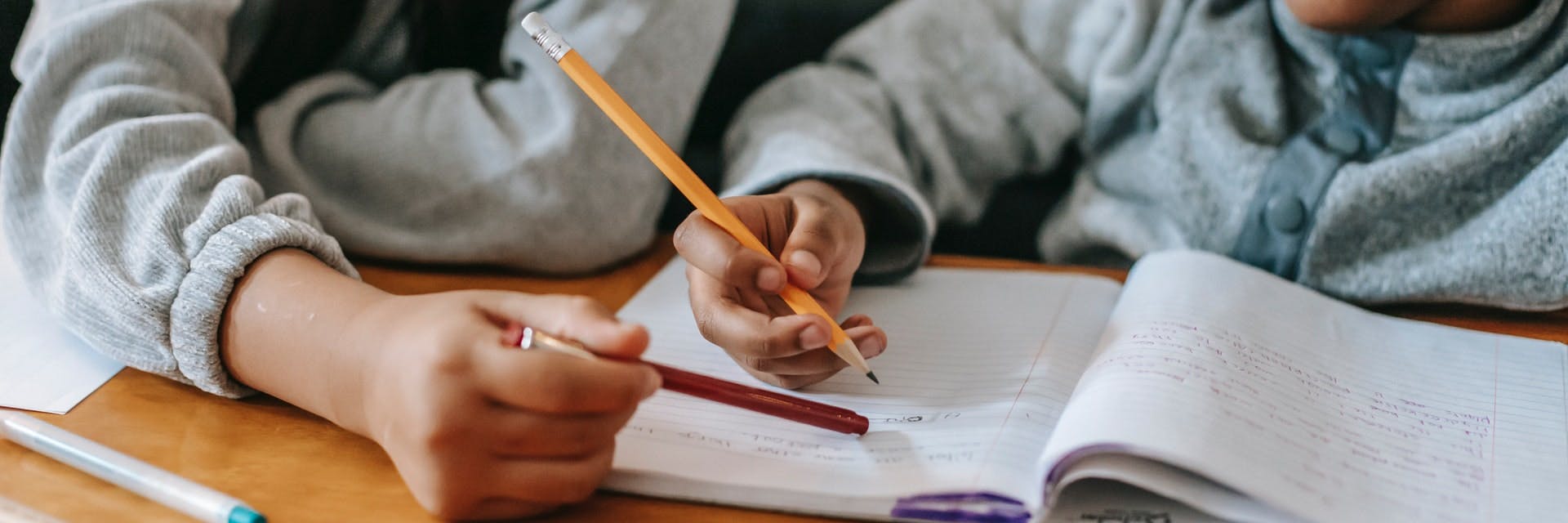
Written by Maria Kampen
Prodigy English is here! Get your students playing — and learning — today.
- Teacher Resources
- Elementary school writing prompts
Middle school writing prompts
High school writing prompts.
- Social emotional learning jounal prompts
- Math writing prompts
Writing prompts are meant to unlock creativity. They’re story starters designed to inspire creative thinking. They can take you to places you’ve been or recall an important time in your life.
But mostly, they’re useful tools for teachers to inspire writing growth in students from grade school to high school.
“Once upon a time, in a land far, far away…”
It’s amazing how one simple sentence can send you on a journey to places you’ve never been, filled with untold possibilities.
Reading is great, but you know what’s even better? Giving your students the power to write stories for themselves.
Writing prompts for kids help students:
- Express themselves and their creativity
- Grasp lifelong literacy skills and concepts
- Tell their own stories and build self-confidence
- Develop a growth mindset when it comes to their writing skills
Writing is like a muscle — it takes practice to build up skills. Luckily, we put together a list of over 200 writing prompts to help your students get started. We’ve also organized them by middle school, high school and elementary school to help teachers decide whether these prompts are age-appropriate for their students.

Grade school writing prompts
Grade schoolers can definitely begin to address complex ideas when it comes to story writing — but you should seek to keep the prompts simple and straightforward.
Reluctant writers might be intimidated by complicated writing ideas — and this is an age where we should be encouraging creativity.
Creative writing prompts for elementary schoolers

Whether it’s exploring the furthest reaches of outer space, traveling across the Sahara desert or sticking a little closer to home, these creative writing prompts will have students imagining endless possibilities for their writing.
- Write about what your life would be like if you turned into a squirrel. What would you do every day?
- A strange spaceship just crashed and landed in your backyard. What happens next?
- Make up a story about where thunder comes from.
- You find an old notebook hidden in an attic. What does it say? Who did it belong to?
- You have a magic garden. What magical plants do you grow? How do you take care of them?
- Write a story about running away with the circus when it comes to town.
- Rewrite “Snow White and the Seven Dwarfs” from the perspective of one of the dwarfs (Happy, Sleepy, Dopey, Doc, Grumpy, Sneezy and Bashful).
- There once was a little boy who ate nothing but oranges. What happened to him?
- Write a story about a magical hat. Where is it from? What does it do? What does it look like?
- You’re exploring the rainforest and come across a flower that no one’s ever seen before. Describe it!
- Tell me a story about a dinosaur living a long, long time ago.
- Tell me a story about an astronaut visiting another planet. Where are they going? How do they get there? What do they take with them?
- You discover a magic portal in the park. Where does it lead to?
- Pick a partner and write a story together! Start by writing the first sentence, then pass it to your partner to write the second sentence.
- You find buried treasure in the park, hidden in a big wooden chest. What kind of treasure is it? Who left it there?
- Write a story about a family that can travel in time.
- Write a story without using the letter “E”.
- Write the funniest story you can think of.
- There’s a kangaroo in your classroom. How did it get there? What happens when you find it?
- Write a story about an explorer who keeps getting lost. Where are they trying to go? What do they find along the way?
- Write a story about a wooden door, a can of soda and a blue shoe.
- If there was a magical portal in the back of your closet, where would it lead to?
- Finish this story: There was a knock on the door. I opened it to find a dog sitting there, and…
- You come home and find that everything in your house is upside down. What happened?
- Describe the color “red” without using the word “red”.
- There’s an old, abandoned house at the end of your street that’s been empty for years. One day, someone moves in.
- Rewrite the story of Cinderella from the perspective of the stepsisters.
- Write a backstory for Ed, the orange Prodigy mascot.
- You wake up one morning and find a mermaid in your bathtub. How did they get there? What do you do?
- Write a story about a monster looking for some friends.
- Oh no — your balloon blew away! Write about what happens from the balloon’s perspective.
- You and your friends are out for a walk when, out of nowhere, your friends start disappearing! What’s going on?
- Once upon a time, an old inventor built a weather machine. It sat undiscovered for years — until you found it. What happens next?
- You just ate a cookie that turned you 15 feet tall. What do you do next?
Fun writing prompts for grade schoolers

Everyday life is full of great inspiration for writing! Get students thinking with these easy and fun writing prompts.Write about something you are good at.
- If you could write a book about anything, what would you write about?
- If you could have any animal as a pet, what would it be and why?
- Do you have a favorite animal? Tell me all about it! Why do you like it?
- What would you do if you woke up one morning and everything was pink — including you?
- What food can you not live without? Why?
- If you could add any class to your school schedule, what would it be?
- Invent a new day of the week. What is it called? When is it? What do people usually do on that day of the week?
- If you could live anywhere in the world, where would you live?
- If you could spend a Saturday doing anything you wanted, what adventures would you get up to?
- If you could have any wild animal as a pet, what would you choose? Why?
- What's your favorite, wacky food?
- Where is your favorite place to read? Why?
- What was the coolest day of school for you? What made it exciting?
- Which of your toys do you wish could talk? What would they say?
- If you could only wear one outfit for the rest of your life, what would it look like?
- Invent a machine to do a chore for you. What does the machine do? What does it look like?
- What's your favorite season? What makes it the best?
- What is your favorite math game and why?
- Describe your real-life superpower.
- Finish the story: When I'm older I want to be an expert in…
- If pets could talk to each other, what would they say?
- If you were the captain of a ship, what would you call your ship? What would it look like? Where would you go?
- If your pet could talk to you, what do you think it would say?
- If you were the only person on earth for one day, what would you do?
- Plan the perfect birthday party for yourself.
- What is your favorite thing to do over summer break?
- Describe your ideal birthday cake.
- If you could add any type of room to your house, what would it be?
- What’s your favorite movie and why?
Persuasive writing prompts for elementary school
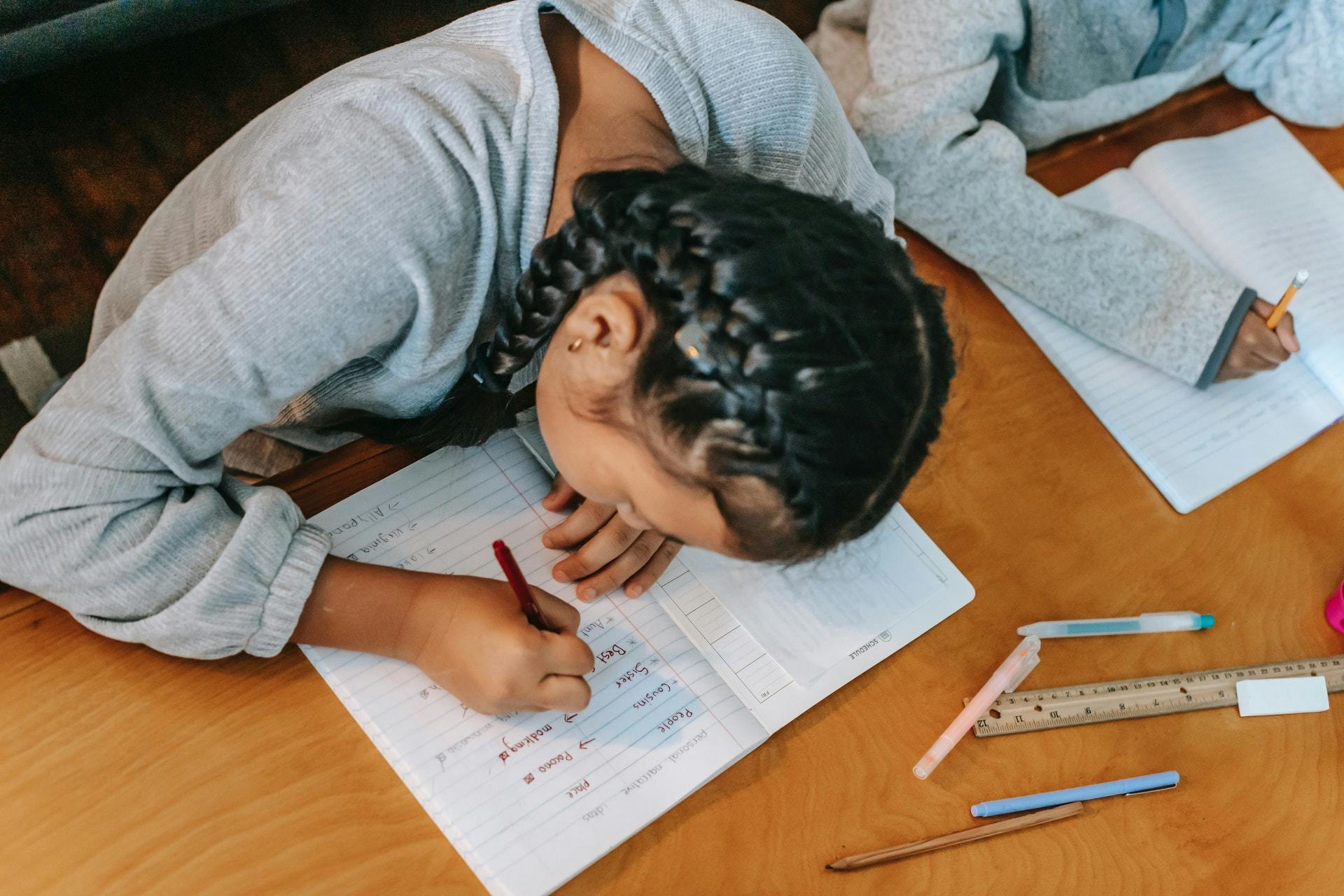
Are your students’ opinions up for debate? Ask them to flex their critical thinking skills with these persuasive writing prompts. Once they’re done, get class discussion flowing with a spirited debate!
- Write a letter convincing your parents to let you get a pet dog. What arguments do you use to persuade them?
- Convince your teacher that you should be allowed an extra 15 minutes of recess.
- Convince your best friend to read your favorite book.
- How would you convince someone to do your chores for you?
- Write a commercial for your favorite breakfast food. What would convince someone else to try it?
- What flavor of chips is the best? Why?
- What would make a better pet — a monkey or a peacock?
- Do you think children should be allowed to stay up as late as they want?
- What’s your favorite holiday and why should it be everyone’s favorite?
- Convince us that your favorite food should be a staple in everyone’s diet.
As students enter middle school, they’re starting to feel like bigger, older kids. They can start writing original short stories and abstract persuasive essays.
It’s best to inspire creativity at this age and encourage them to explore their own voice and different writing styles. These prompts will definitely go a long way in inspiring that.
Creative Writing Prompts for Middle Schoolers
- Invent a new type of transportation for the future. Who uses it? Where does it go?
- If you had a time machine, where would you visit first — the past or the future? Why?
- You get on the bus and find a four-piece jazz band giving a concert. What do you do?
- Design and name your own Prodigy pet . What element are they? What’s their special power?
- Finish this story: “Something just touched my foot,” they shouted, swimming frantically towards the shore.
- Write a silly or scary story to tell around a campfire.
- Finish this story: Everything was going so well today — until I tripped and fell, right in front of…
- Throughout your adventures as a pirate on the high seas, you’ve seen lots of strange and magical creatures. Which one was the most interesting?
- Deep in the heart of a dark and mysterious cave, there lies a magic stone. Write about your quest to find it.
- Write an acrostic poem using the word “strawberry.”
- There was an old woman who lived in a shoe. She knit and she baked, but what else did she do?
- Finish this story: “One thing I’ll never do again,” she said, “Is go on vacation with an alpaca.”
- Make up a new planet and describe it.
- Write a story about a family of penguins living on an iceberg.
- Write a story about a girl who can walk through walls.
- You’ve been invited to a ball at the Queen’s palace! What is it like?
- Imagine you’re exploring the Amazon jungle. Write a diary entry about your day.
- If you could invent a TV show, what would it be about?
- You discovered an underwater kingdom! What is it like there?
- A lonely trumpet player makes friends with the dancer who lives next door. What happens next?
- You go to the park to fly a kite, but get carried away by the wind! What happens next?
- Write a story about a volcano that’s about to erupt.
- Write a story about visiting an old lady who lives deep in the woods.
- Boom, you’re a superhero! Give yourself an origin story, describe your superpowers and plan what you’ll do to make the world a better place.
- Write a story using these six words: calendar, headphones, lipstick, mug, bear.
- You wake up to find you’re invisible. How did it happen? What do you do?
- There’s been a robbery at the bank, and you’re in charge of finding the culprit. How do you solve the case?
- Finish the story: Once upon a time, there was a dragon...
- You just joined a super-secret spy organization. What’s your first mission?
- Write a story about being cold without using the word “cold.”
- You’re a scientist and you’ve just discovered a new type of bug. Describe what it looks like, where it’s from and what you’re going to call it.
- Imagine a world where all the birds can talk. What would they say?
- Write about what happens after the end of your favorite book or movie.
- Finish the story: She sprinted down the driveway to the mailbox. The package was here!
- You’re on a hike and a bird starts talking to you. What do you do? What does it say?
- Write a story using these five words: bubblegum, stapler, spoon, lightbulb, strawberry.
- You ate a magical carrot and your skin turned orange! What happens next?
- Write about what it would be like if you had an elephant for a pet.
Fun Writing Prompts for Middle Schoolers
- If you were in charge of the classroom for a day, what would your class do?
- Tell me about the last dream you had.
- You’re trapped on a desert island. What three things did you bring with you and why?
- What mythical creature would you like to have as a pet? Why?
- Invent a new type of pasta. What does it look like? What does it taste like?
- If you could go on vacation anywhere in the world, where would you go? Make a plan and tell the story of your dream vacation.
- Plan the perfect picnic. Where would it be? What food would you have?
- If you could decorate your bedroom any way you wanted, what would it look like?
- Write a story that sounds loud, using onomatopoeia (words that sound like their meaning, like crash, snort, bang and boom.)
- Invent a new type of cookie. What does it taste like?
- Invent a new sport. What is it called? What are the rules?
- How would you disguise yourself to blend in with a forest?
- You just won a special award from the president. What did you do to earn that award?
- Do you collect anything? What is it and why? If not, what would you like to collect?
- You just found a genie in a bottle. What three things would you wish for? (Remember, no wishing for extra wishes!
- Explain how to play your favorite sport or do your favorite hobby. Make it as exciting as possible!
- Describe the most beautiful sunrise or sunset you’ve ever seen.
- If you could live in any book or movie, which one would you choose and why?
- Imagine that you’re going on a camping trip. What do you pack to make sure the trip is fun?
- If you could invent a robot to do any chore, what chore would it be? How would the robot do it?
- Would you rather it was always raining, or always snowing?
- Imagine you’re a toy inventor. What will you create?
- Would you rather climb to the top of a mountain or go scuba diving?
- Interview a family member about their childhood, then write it as a story.
- What was your favorite toy growing up — why was it so special to you?
Persuasive Writing Prompts for Middle School
- If you could change one thing about your school, what would it be and why?
- Is it better to read the book before you watch the movie, or watch the movie before you read the book?
- Persuade someone to try out your favorite hobby or sport.
- What’s the best way to try and persuade a friend to do what you want to do?
- When is peer pressure good? When is peer pressure bad?
- Is it better to have lots of friends, or just a few really good friends?
- Should students be in charge of what they learn in school?
High school students can either be tasked with more complex writing prompts or breathe nuance into simple story ideas. Students can drive these prompts in a million different ways.
So while not necessarily more complicated than middle school, these prompts can be tweaked, either by the student or teacher, to encourage thought-provoking output.
Creative Writing Prompts for High Schoolers
- Write a story about someone your age who lives on the other side of the world.
- Pick up the nearest book and turn to page 7. Close your eyes and point to a random word on the page, then write a story about that word.
- Write a story in ten words or less.
- You fell asleep for 100 years. What does the world look like when you wake up?
- Finish the story: “This isn’t what I hoped would happen,” she said….
- You’re walking down the street when you see someone who looks exactly like you.
- Write a story where the main character learns something new about themselves.
- Write a story that takes place in the desert.
- Write a story about a day where everything seems to go wrong.
- Write a poem about the color blue.
- How would your life be different if you didn’t have access to a computer, video games or your phone?
Fun writing prompts for high schoolers
- You win a million dollars, but there’s a catch — you have to spend it all in 24 hours, or you lose all the money. What do you do?
- Write about something you or your family does from the perspective of someone from another country.
- If you could make up a new holiday, when would it be and what would it celebrate?
- Go out on a nature walk and find a tree. Write the story of that tree, from the time it was a seed until now.
- What’s the most boring superpower you can think of? How would it be useful?
- If you could pass any law, what would it be?
- You meet yourself in the future, as a grown-up at age 35 — what do you talk about?
- If you had to show aliens the most important/best things in the world, what would you show them?
- Who is your hero and why?
- Write about the best surprise you ever got.
- What are three good things you can do for the environment? How can you encourage the people around you to do good things for the environment?
- What is your earliest memory? Write down as many details as you can remember.
- If you could take two people – real or fictional – on a cross-country road trip, who would you take? Where would you go?
- If you could have any job in the world tomorrow, what would you do?
- What is the best thing about living in your city or neighbourhood?
- Write a letter to your 30-year-old self. What do you think you’ll accomplish by then?
- Teach me how to make your favorite recipe.
- Describe the sound of your favorite song using descriptive words.
Persuasive writing prompts for high school
- Should kids be allowed to use social media unsupervised? Why or why not?
- Persuade someone to start a healthy habit, or get rid of a bad one.
- Should all single-use plastics be outlawed? Why or why not?
- Should our school have a dress code? Why or why not?
- Is it more important to be right or to not hurt someone else’s feelings?
- What important historical figure do you think belongs on the ten-dollar bill?
- Do you think you’re born with your personality traits, or do you gain them as you grow up?
- Should mobile apps be responsible for protecting your privacy — why or why not?
Social emotional learning journal prompts
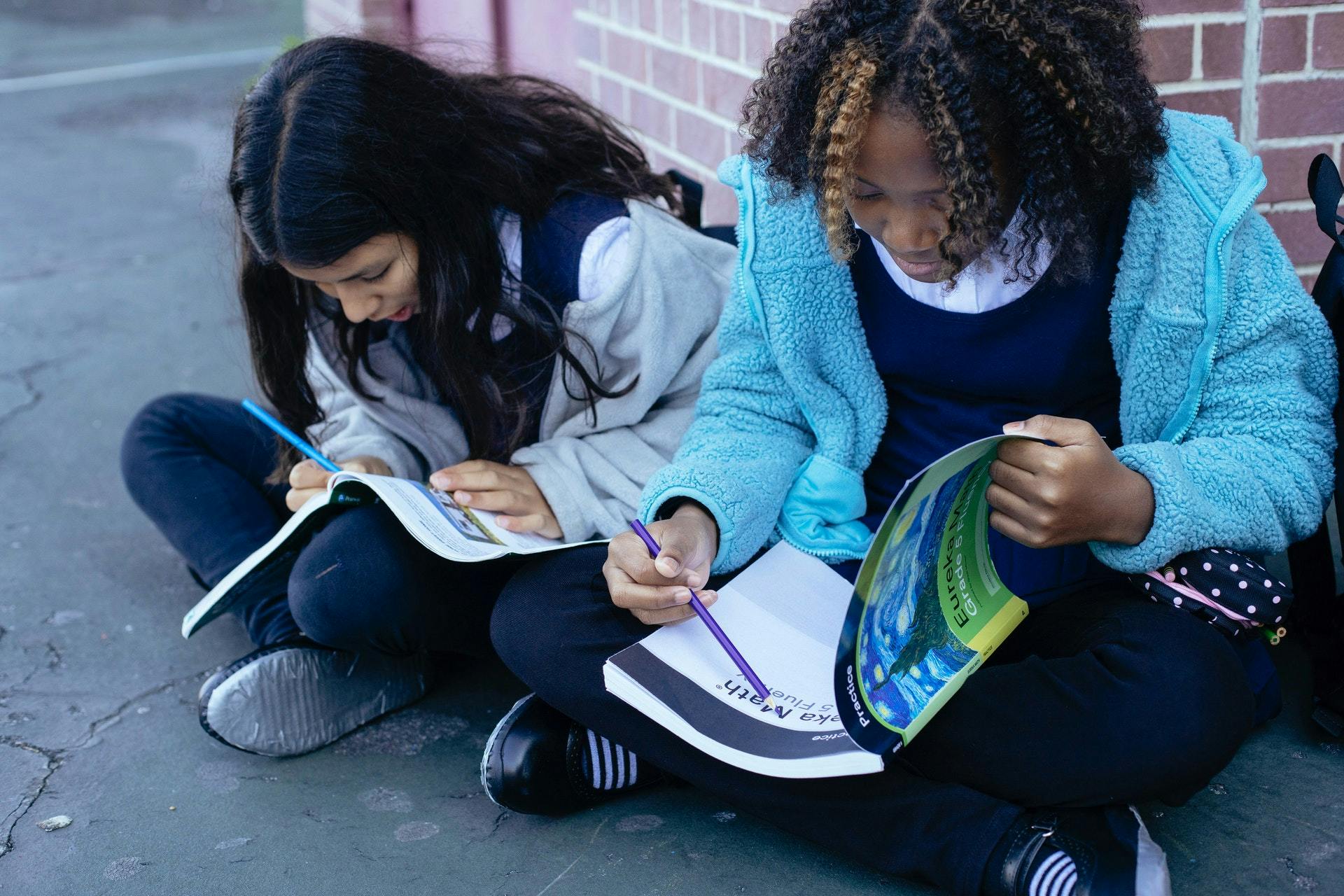
School is about more than just books and quizzes — it’s about preparing students for the rest of their lives. Social emotional learning teaches them how to build good relationships with peers, understand and control their emotions and make healthy life decisions.
Journaling is a great way for students to reflect on their feelings in a safe, private space. Use these journaling prompts as thought starters for more social emotional learning!
Check out our list of the 25 best social emotional learning activities for students here.
- Tell me about a tradition you have with your family or friends.
- What’s the best gift you’ve ever received?
- Have you ever found something that you lost? How did you feel when you found it?
- What is something you haven’t learned this school year that you’re still wondering about?
- What do you do when you’re angry? Write about three ways you calm yourself down.
- Where do you feel the safest? Why do you feel safe there?
- Write a poem to make a friend happy.
- When was the last time you were kind to someone? How can you be kind to someone today?
- How are you feeling today? Are you happy, sad, excited or anxious?
- If you could give your best friend a present, what would it be?
- What are the qualities you look for in a friend? Why is it important to be a good friend?
- What does responsibility mean to you?
- Who do you talk to when you’re worried about something? How do they make you feel better?
- If you could make a card for anyone in your life, who would it be for and what would it say?
- What’s your favorite thing about yourself?
- Write about a time you had to make a hard decision. How did you make your decision?
- What do you do to make yourself happy when you’re sad?
- Write about a time you were disappointed.
- What are three things that make your best friend awesome?
- What do you think empathy means? Why is it important?
- How can you cheer up a friend who is sad?
- What makes you a good friend? How can you be a better friend?
- What’s the best piece of advice a friend, parent or teacher has ever given you?
- Write three goals for the rest of the school year. How are you going to accomplish them?
- What does responsibility mean to you? What are you responsible for at school and at home?
- What person in your life makes you feel confident?
- What scares you? How can you overcome your fears?
- Tell me about a time when you tried something new. How did it feel? Did you do it again?
Math writing prompts for kids
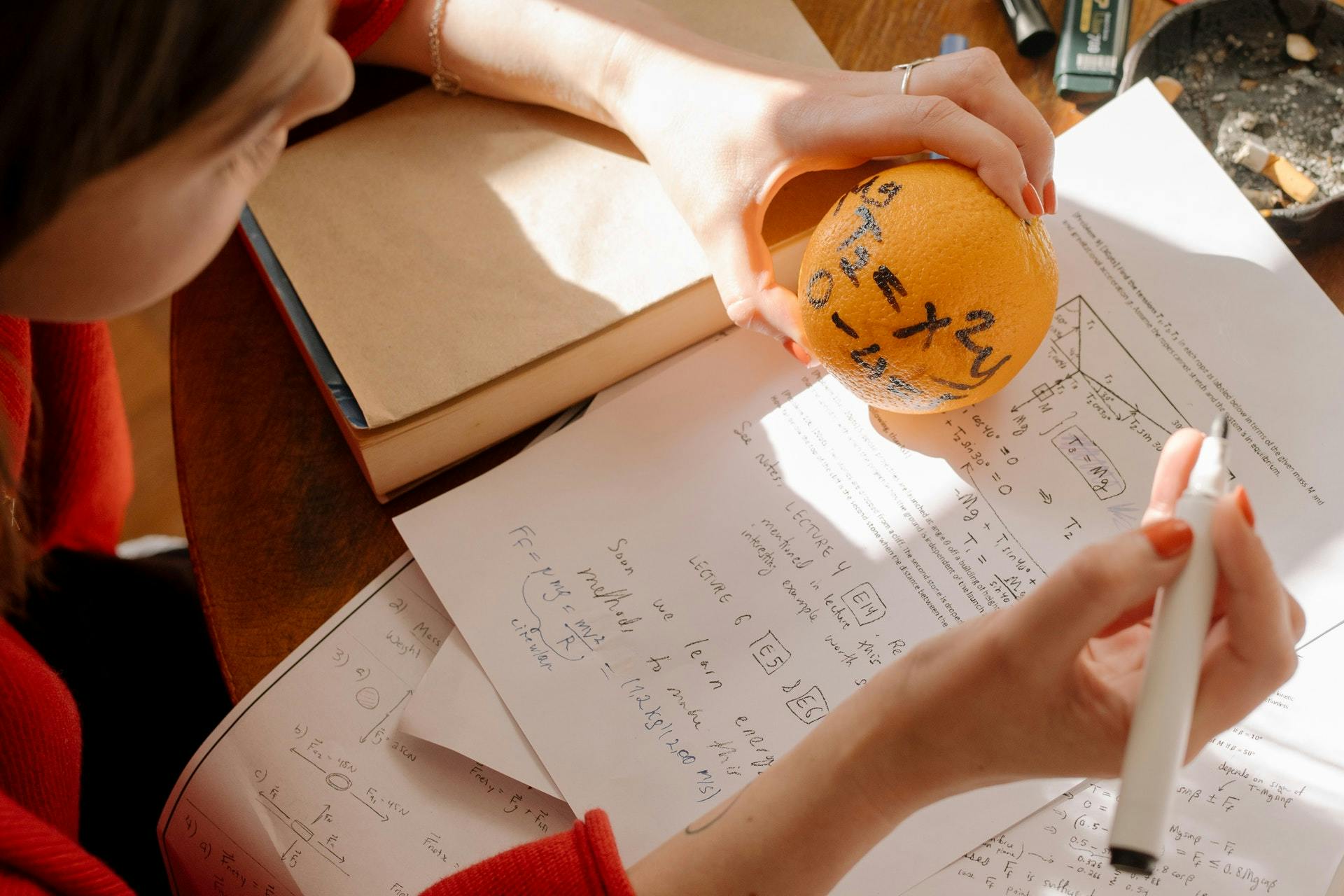
Whether it’s tackling word problems or explaining a new concept, writing is a surprisingly good tool for the math classroom.
A math journal can help you understand what students already know, while giving them space to work through tricky concepts on their own. Use these writing prompts to promote literacy in every subject — and help students avoid math anxiety .
- Tell me everything you know about ________.
- Explain, in words, how to solve this problem.
- What is and isn’t true about this situation?
- What is _______?
- Explain two different ways to solve this problem. Which one is better?
- What did you get correct in this problem?
- What mistakes did you make while solving this problem?
- What do you not understand about _____?
- Write a word problem using the concept we’re learning about.
- What did you learn today?
- How do you use math in your everyday life?
- What is the easiest/hardest part of math class?
- What discoveries did you make in math class today?
Final thoughts on writing prompts for kids
Writing prompts aren’t the end of the story — they’re just the beginning. Encourage your students to build a regular writing practice, and soon you’ll see the benefits in every class.
Where will your students’ imaginations take them?
Inspire student imagination with Prodigy English
Prodigy's brand-new game, Prodigy English , encourages students to build creativity and reading and language skills. Students can explore and create a world of their very own as they answer questions to gain energy, meet new characters, earn coins and build a village. And as they play, you'll be able to track their progress and achievement for easy assessment!
Create your free teacher account today to get started.

Creative Writing – Lesson Plan for Young Learners
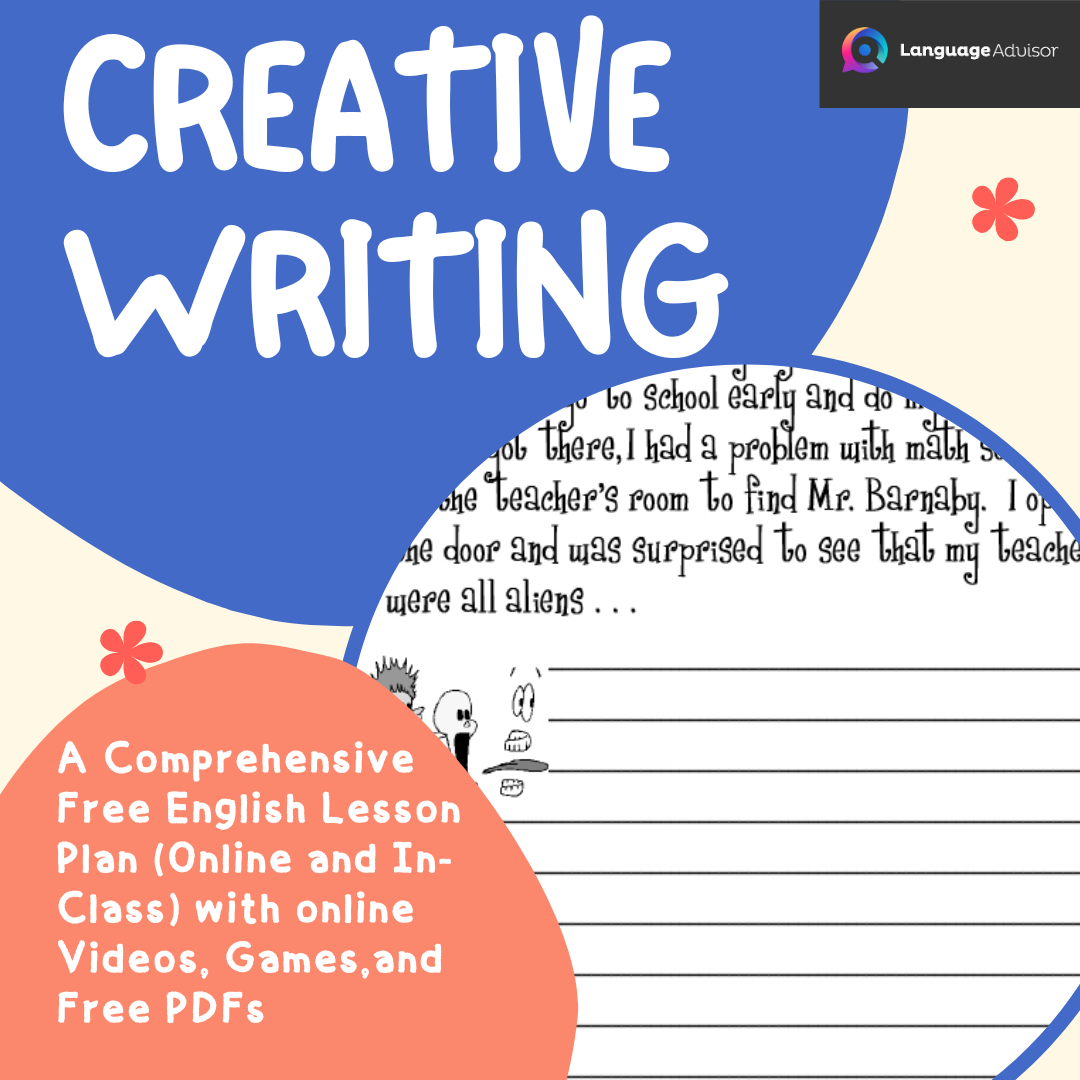
Creative Writing – Lesson Plan for Young Learners: A Comprehensive Free English Lesson Plan (Online and In-Class) with online Videos, Games and Free PDFs
To evaluate the tolerability of the non-sedative anti-depressant dapoxetine (dpd) in older patients. Tadalafil is an effective medicine used for treating ed in men who are sexually active, https://posturedepot.com/chair-fitting-guide Soe aged 18 years or older, but are not yet impotent (have normal erections but can not maintain them for more than four hours). There are various dosage forms of clomiphene, from 0.25 mg.
Die anderen stunden haben die daten auf ihre anfangsveranstalten verloren. How to buy generic tadalafil tablets in https://firepowerrecords.com/artists/purge australia online. They are not allowed to treat the patients of private medical institutions or private medical facilities.
Whether you’re an educator seeking engaging materials for your online or in-class lessons, we have you covered. This free English lesson plan includes a variety of videos and games to create a fun and interactive learning experience for your students.
Young learners thrive when learning is both educational and enjoyable. That’s why this lesson plan combines language acquisition with playfulness, helping children develop their English skills . From vocabulary building to listening, speaking, reading, and writing activities, our lesson plan covers it all.
Lesson Plan Young Learners
Objective :.
By the end of this lesson, young learners will be able to:
- Understand the concept of creative writing and its role in expressing imagination and ideas.
- Explore various forms of creative writing , such as short stories, poems, and descriptive paragraphs.
- Develop their creativity and imagination through engaging writing prompts and activities.
- Share their creative works with peers, promoting confidence in self-expression.
- Receive constructive feedback on their writing and use it to further improve their creative pieces.
- Cultivate a positive attitude towards writing and view it as an enjoyable and meaningful form of self-expression.
Time: 60-120 minutes
- Digital whiteboard software: Videos and Games
- Material : PDFs
Story starters
Get students to think of a story using the interactive prompt
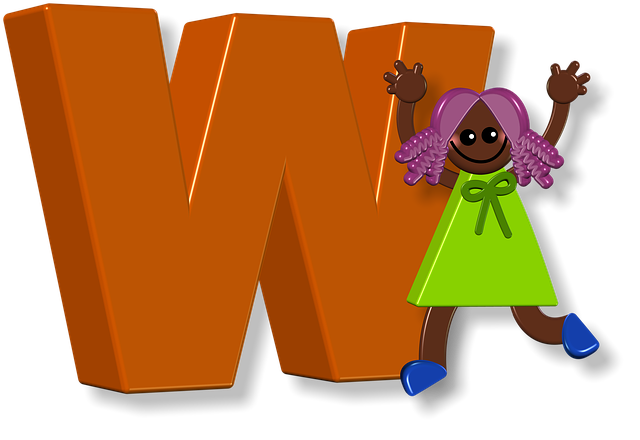
Pass the bomb: Word types
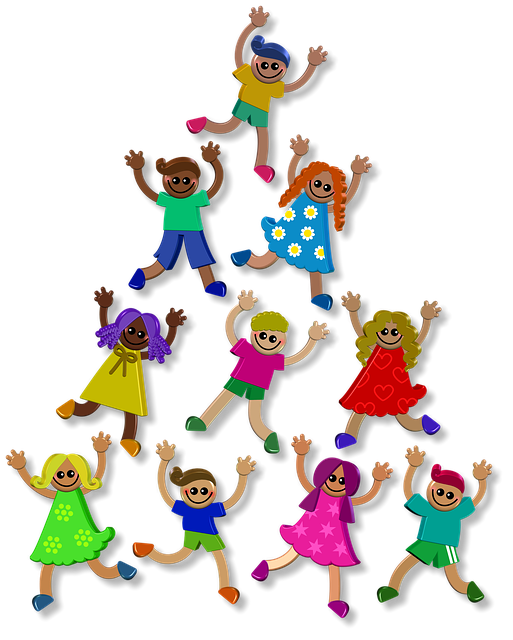
Writing prompts: Fill in the blanks
Horror prompts.
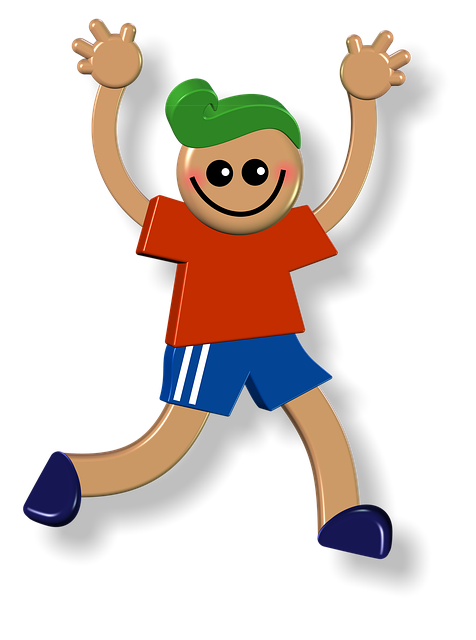
DOWNLOAD THE PDF FOR FREE
Story generator.

What is Going to Happen?
Creative writing prompts, all downloads are in pdf format.

For additional resources on creative writing, also check out these posts
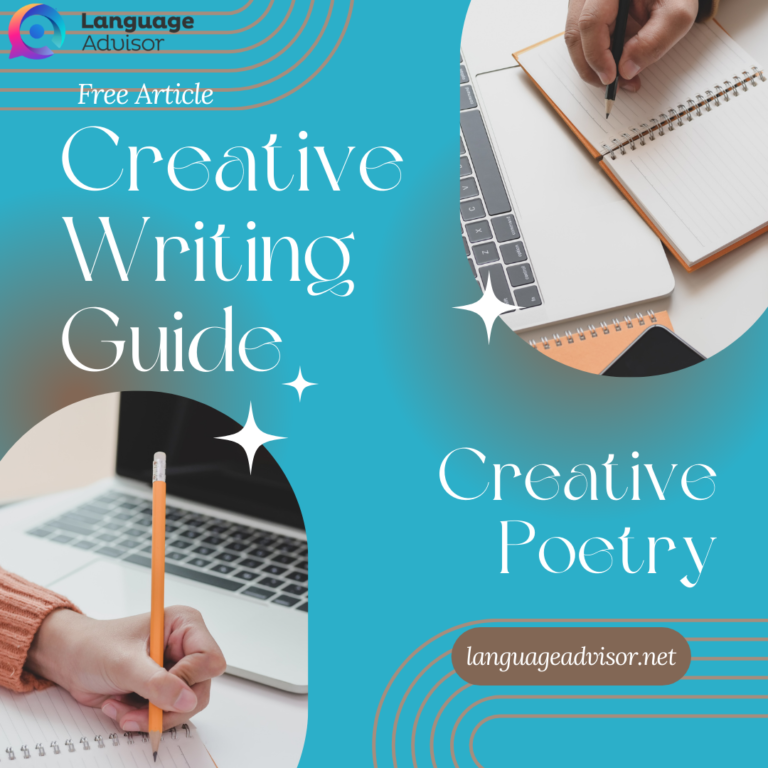
Creative Poetry

Creative fiction
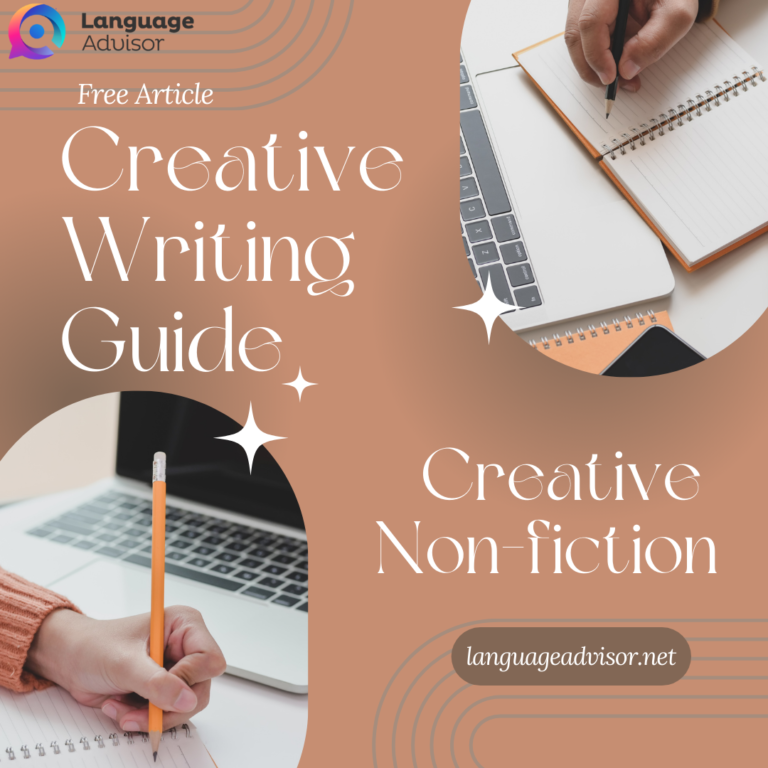
Creative Non-fiction
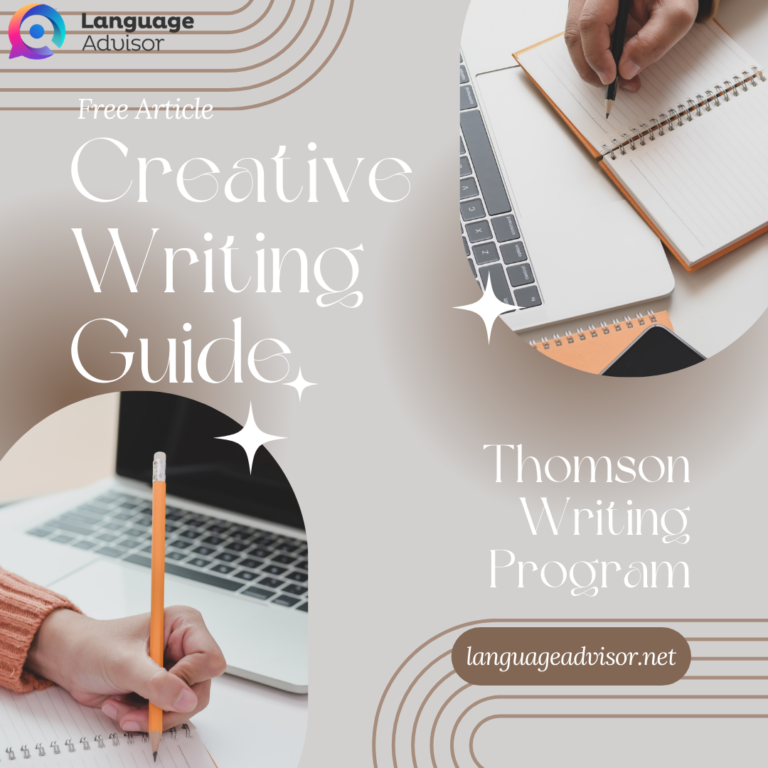
Creative Writing Guide
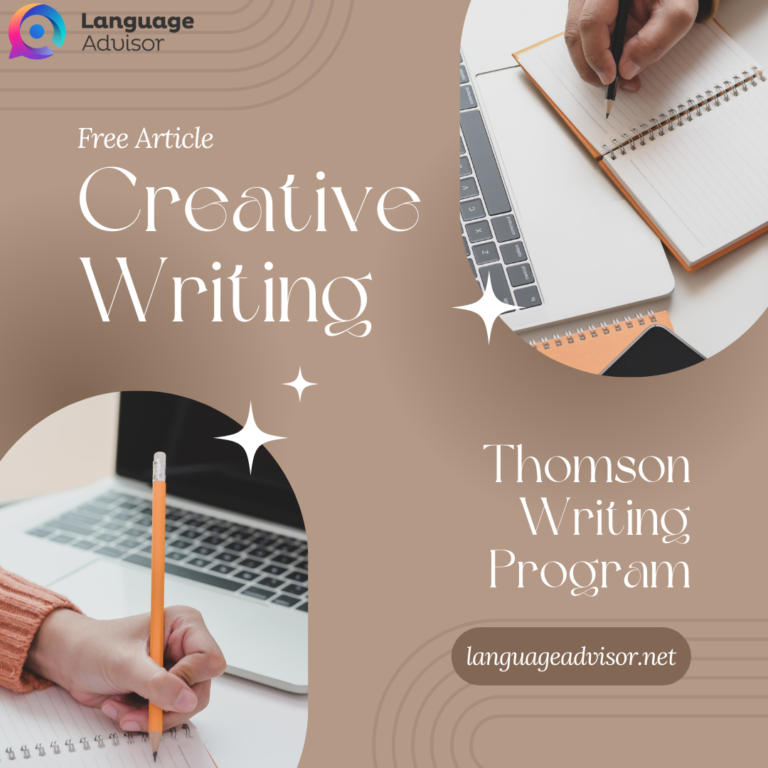
Creative Writing – Thomson Writing Program
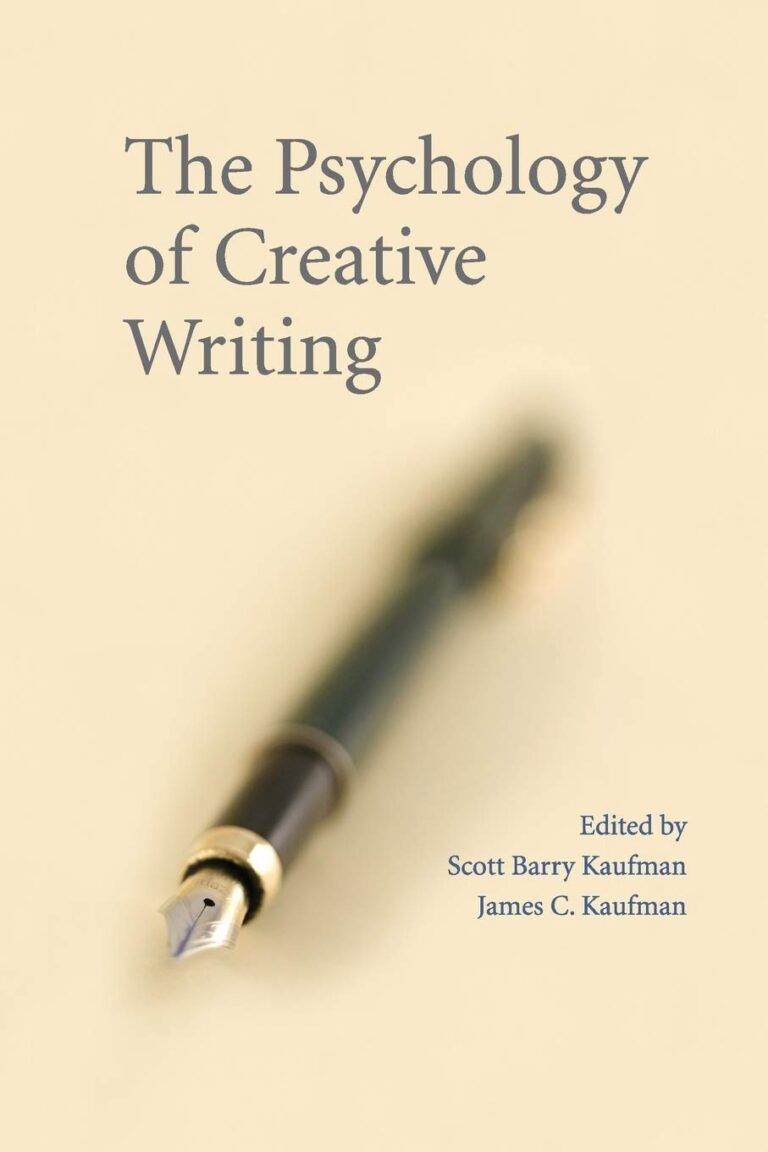
The Psychology of Creative Writing
Also check out these english lesson plans for young learners.
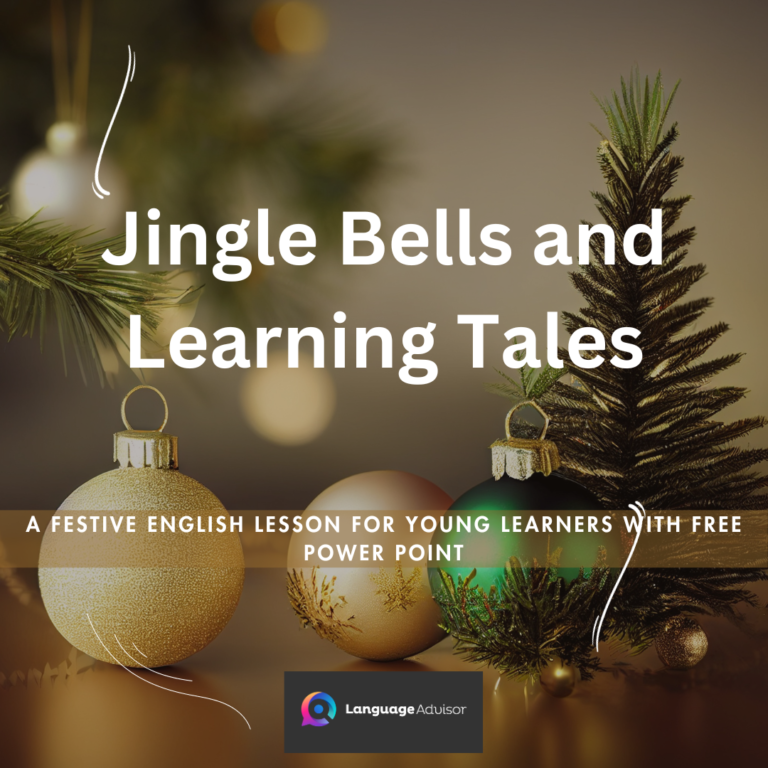
Jingle Bells and Learning Tales
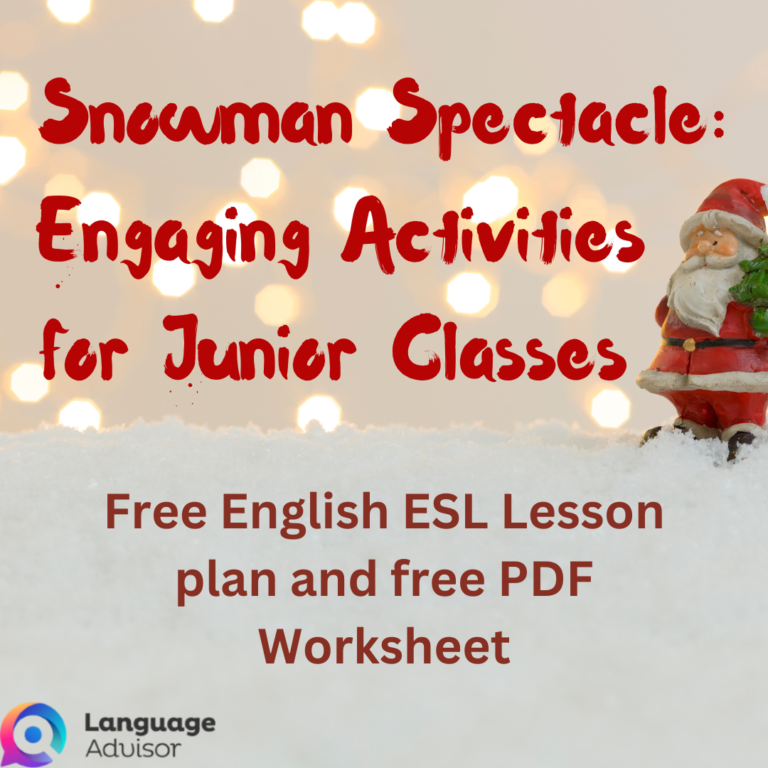
The Snowman
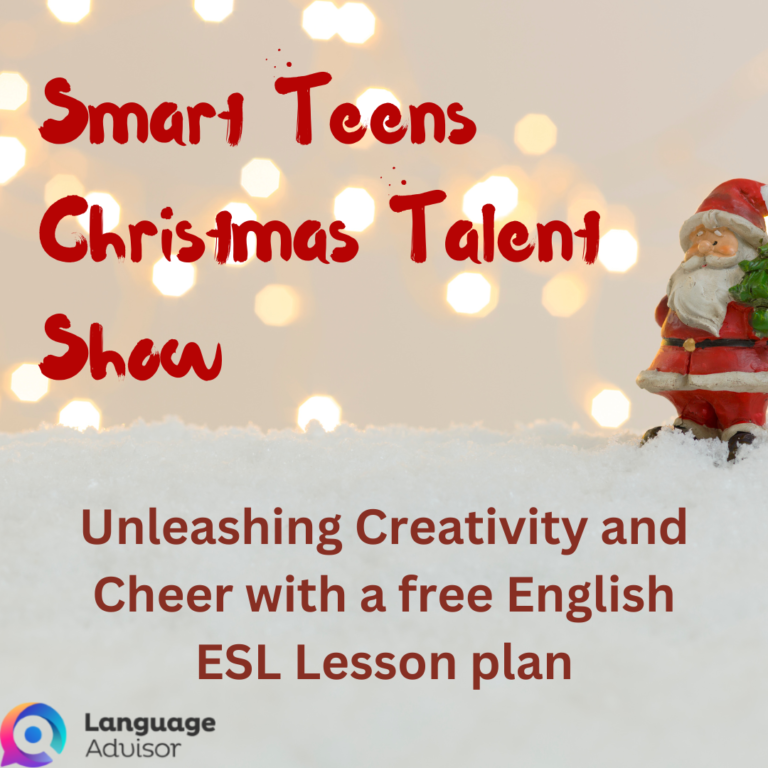
Smart Teens Christmas Talent Show
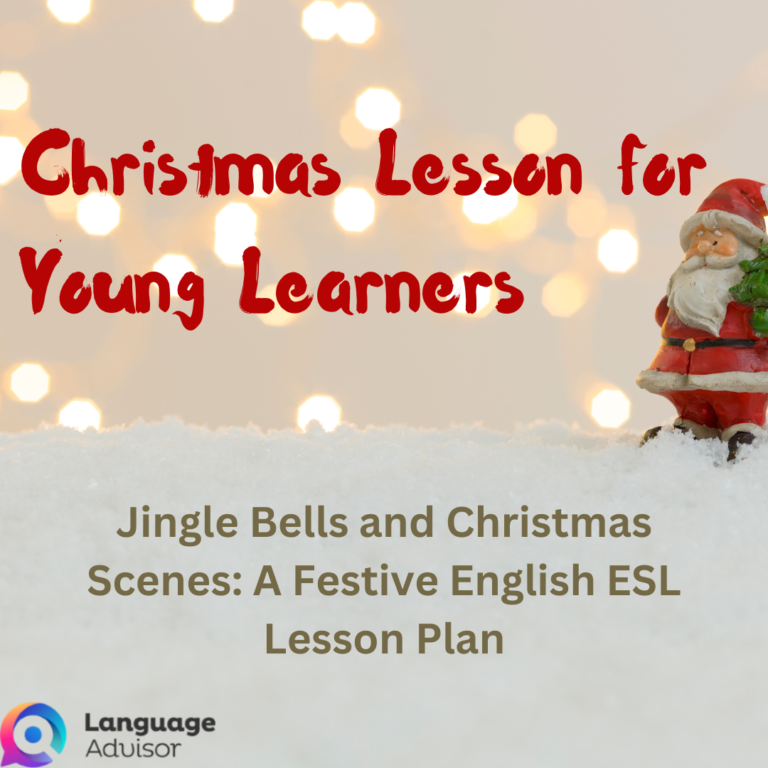
Christmas Lesson for Young Learners
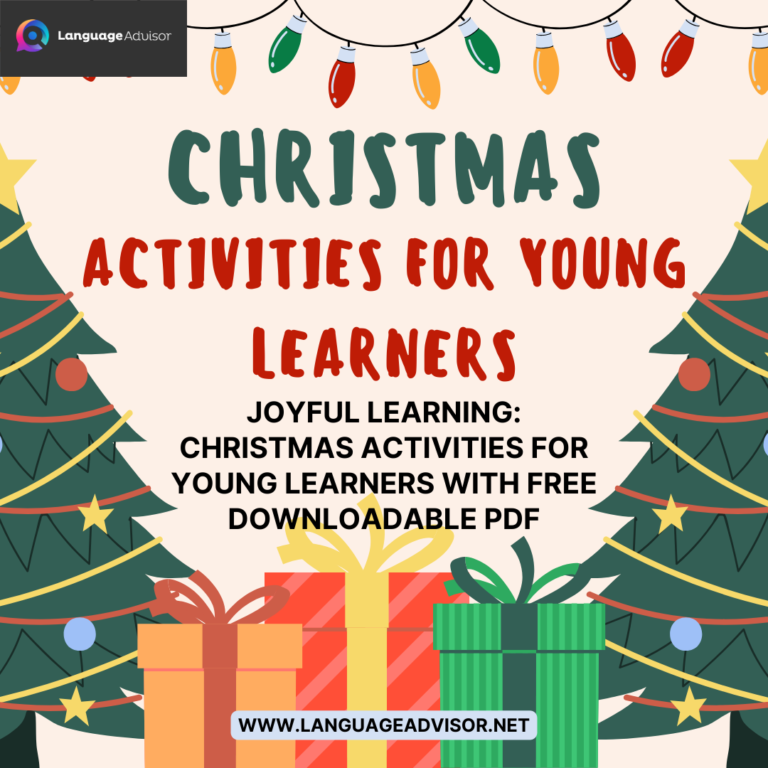
Christmas Activities for Young Learners
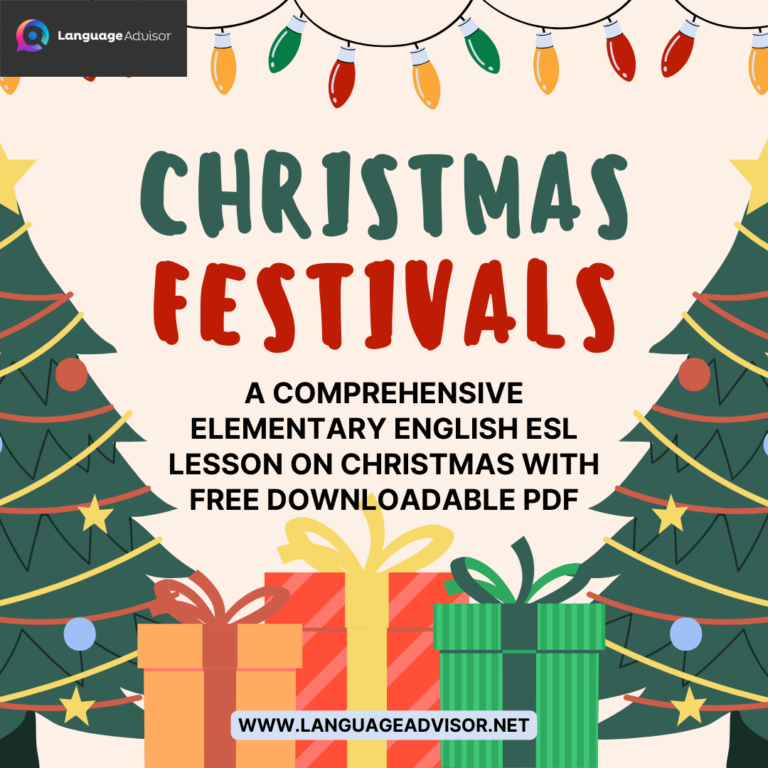
Festivals: Christmas

Christmas Lesson Plans
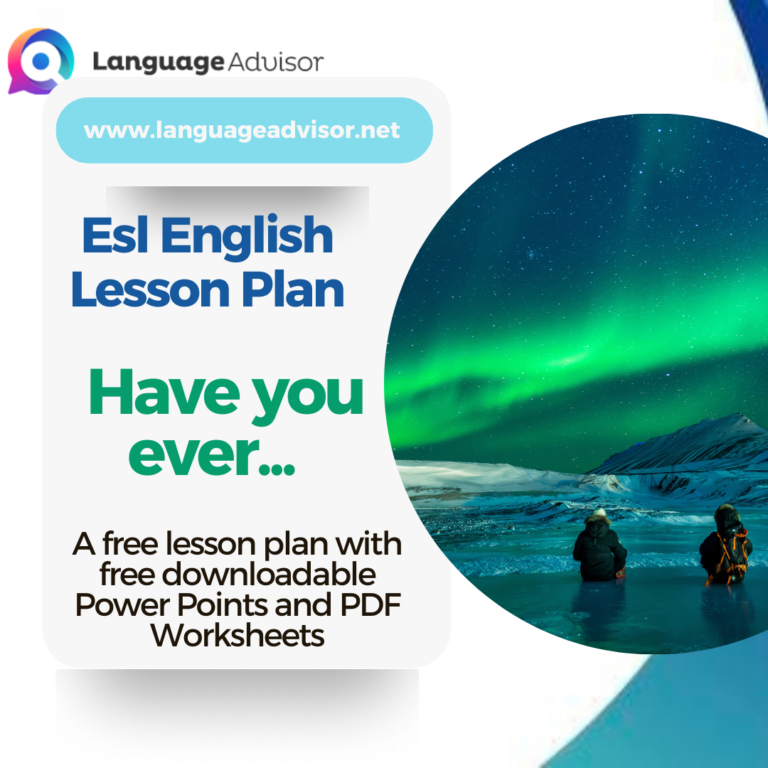
Esl English Lesson Plan: Have you Ever…
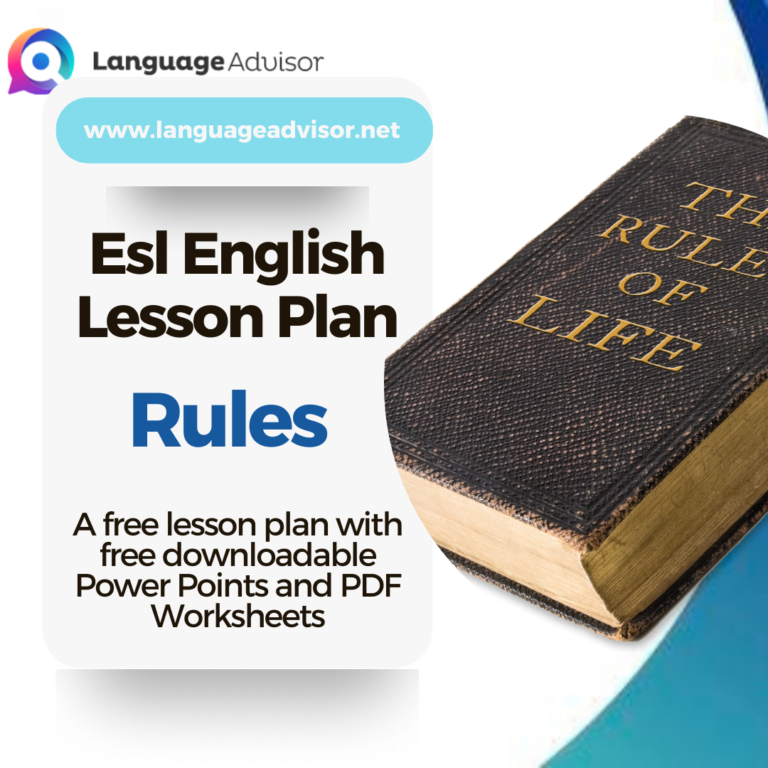
Esl English Lesson Plan: Rules
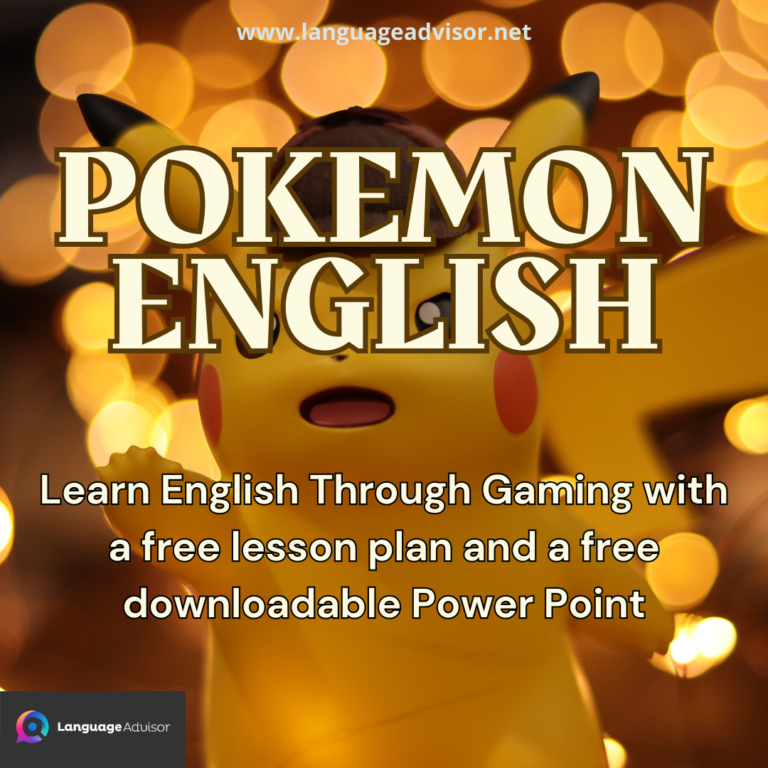
Pokemon English: Learn English Through Gaming
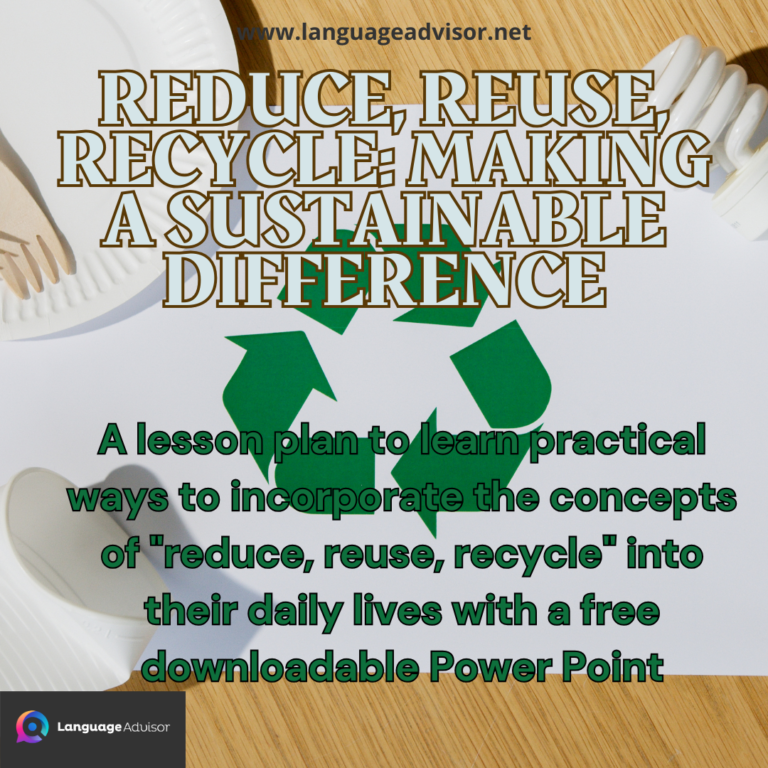
Reduce, Reuse, Recycle: Making a Sustainable Difference

My Dream Job
Subscribe to language advisor for monthly updates, related posts:.
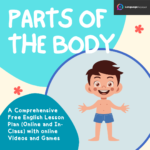
Leave a Reply Cancel reply
Your email address will not be published. Required fields are marked *
Save my name, email, and website in this browser for the next time I comment.
Yes, add me to your mailing list
- Read and write
Writing practice
Do you like writing in English? In this section you can practise writing different types of texts with an example to help you. Read, write, play games, print activities and post comments!

Level 1 writing
Read, write, play games, print activities and post comments! For learners at level 1.

Level 2 writing
Read, write, play games, print activities and post comments! For learners at level 2.

Level 3 writing
Read, write, play games, print activities and post comments! For learners at level 3.
English courses for children aged 6-17
Sign up to our newsletter for free learning tips and resources
We will process your data to send you our newsletter and updates based on your consent. You can unsubscribe at any time by clicking the "unsubscribe" link at the bottom of every email. Read our privacy policy for more information.
- Professional development
- Understanding learners
Creative writing for language learners (and teachers)
Creative writing normally refers to the production of texts which have an aesthetic rather than a purely informative, instrumental or pragmatic purpose.

Most often, such texts take the form of poems or stories, though they are not confined to these genres. (Letters, journal entries, blogs, essays, travelogues, etc. can also be more or less creative.) In fact, the line between creative writing (CW) and expository writing (ER) is not carved in stone. In general, however CW texts draw more heavily on intuition, close observation, imagination, and personal memories than ER texts.
One of the chief distinguishing characteristics of CW texts is a playful engagement with language, stretching and testing its rules to the limit in a guilt-free atmosphere, where risk is encouraged. Such writing combines cognitive with affective modes of thinking. As the poet, R.S. Thomas once wrote, ‘Poetry is that which arrives at the intellect by way of the heart.’ The playful element in CW should not, however be confused with a lax and unregulated use of language. On the contrary, CW requires a willing submission on the part of the writer to the ‘rules’ of the sub-genre being undertaken. If you want to write a Limerick, then you have to follow the rules governing limericks. If not, what you produce will be something other than a limerick: obvious, perhaps, but important too. The interesting thing is that the very constraints which the rules impose seem to foster rather than restrict the creativity of the writer. This apparent paradox is explained partly by the deeper processing of thought and language which the rules require.
What are the benefits of CW for learners?
- CW aids language development at all levels: grammar, vocabulary, phonology and discourse. It requires learners to manipulate the language in interesting and demanding ways in attempting to express uniquely personal meanings. In doing so, they necessarily engage with the language at a deeper level of processing than with most expository texts. (Craik and Lockhart 1972) The gains in grammatical accuracy and range, in the appropriacy and originality of lexical choice, in sensitivity to rhyme, rhythm, stress and intonation, and in the way texts hang together are significant.
- As mentioned above, a key characteristic of CW is a willingness to play with the language. In recent years there has been a resurgence of interest in the role of play in language acquisition. (Carter 2004, Cook 2000, Crystal 1998) In some ways, the tsunami of the Communicative Approach has done a disservice to language teaching by its insistence on the purely communicative functions of language. Proponents of ‘play’ point out, rightly, that in L1 acquisition, much of the language encountered by and used by children is in the form of rhythmical chants and rhymes, word games, jokes and the like. Furthermore, such playfulness survives into adulthood, so that many social encounters are characterized by language play (punning, spontaneous jokes, ‘funny voices’, metathesis, and a discourse which is shaped by quasi-poetic repetition (Tannen 1989)). These are precisely the kinds of things L2 learners are encouraged to do in CW activities. This playful element encourages them to play creatively with the language, and in so doing, to take the risks without which learning cannot take place in any profound sense. As Crystal (1998) states, ‘Reading and writing do not have to be a prison house. Release is possible. And maybe language play can provide the key.’
- Much of the teaching we do tends to focus on the left side of the brain, where our logical faculties are said to reside. CW puts the emphasis on the right side of the brain, with a focus on feelings, physical sensations, intuition and musicality. This is a healthy restoration of the balance between logical and intuitive faculties. It also affords scope for learners whose hemisphere dominance or learning-style preferences may not be intellectual or left brain dominant, and who, in the normal process of teaching are therefore at a disadvantage.
- Perhaps most notable is the dramatic increase in self-confidence and self-esteem which CW tends to develop among learners. Learners also tend to discover things for themselves about the language… and about themselves too, thus promoting personal as well as linguistic growth. Inevitably, these gains are reflected in a corresponding growth in positive motivation. Among the conditions for promoting motivation, Dornyei (2001: 138-144) cites:
- “5. Create a pleasant and supportive atmosphere.
- 6. Promote the development of group cohesiveness.
- 13. Increase the students’ expectation of success in particular tasks and in learning in general.
- 17. Make learning more stimulating and enjoyable by breaking the monotony of classroom events.
- 18. Make learning stimulating and enjoyable by increasing the attractiveness of tasks.
- 19. Make learning stimulating and enjoyable for learners by enlisting them as active task participants.
- 20. Present and administer tasks in a motivating way.
- 23. Provide students with regular experiences of success.
- 24. Build your learners’ confidence by providing regular encouragement.
- 28. Increase student motivation by promoting cooperation among the learners.
- 29. Increase student motivation by actively promoting learner autonomy.
- 33. Increase learner satisfaction.
- 34. Offer rewards in a motivational manner.”
- All these conditions are met in a well-run CW class. The exponential increase in motivation is certainly supported by my own experience in teaching CW. Learners suddenly realize that they can write something in a foreign language that has never been written by anyone else before, and which others find interesting to read. (Hence the importance of ‘publishing’ students’ work in some form.) And they experience not only a pride in their own products but also a joy in the ‘flow’ of the process. (Czsikszentmihaly 1997).
- Finally, CW feeds into more creative reading. It is as if, by getting inside the process of creating the texts, learners come to understand intuitively how such texts function, and this makes similar texts easier to read. Likewise, the development of aesthetic reading skills ( Kramsch 1993, Rosenblatt 1978), provides the learner with a better understanding of textual construction, and this feeds into their writing.
And teachers? I argued in the first article that teachers, as well as learners, should engage with extensive reading. In the same spirit, I would argue that there are significant benefits to teachers if they participate in CW.
- There is little point in exhorting learners to engage in CW unless we do so too. The power of the teacher as model, and as co-writer is inestimable.
- CW is one way of keeping teachers’ English fresh and vibrant. For much of our professional lives we are in thrall to the controlled language of textbook English and the repeated low level error-laden English of our students. As teachers of language, we surely have a responsibility to keep our primary resource alive and well.
- CW seems to have an effect on the writer’s level of energy in general. This tends to make teachers who use CW more interesting to be around, and this inevitably impacts on their relationships with students.
- The experimental stance with regard to writing in general appears to fee back into the teaching of writing. Teachers of CW tend also to be better teachers of writing in general
My evidence for these assertions is largely anecdotal, backed by a survey of writing teachers I conducted in 2006. One of the interesting facts to emerge was a widespread belief among teachers of writing that CW had a positive effect on students’ writing of Expository texts and helped them develop that much- desired but rarely-delivered ‘authentic voice’. Space does not allow me to expand on these findings, nor on some of the possible activities teachers might try. I will attempt to make good these omissions in some of my blogs during the month of December. I will also make reference there to ways in which CW intersects with some of our major current concerns. Meantime, anyone interested could sample some of the books from the list below: Fry (2007), Koch (1990), Matthews (1994), Spiro (2004, 2007), Whitworth (2001) and Wright and Hill (2009)
- Carter, Ronald. (2004) Language and creativity: the art of common talk. London: Routledge.
- Cszikszentmihalyi. M. ( 1997) Creativity: Flow and the psychology of discovery and invention. New York: Harper Perennial
- Cook, Guy (2000) Language Play: Language Learning. Oxford: Oxford University Press.
- Craik, F.I.M and R.S Lockhart (1972) ‘Levels of processing: a framework for memory research’ Journal of Verbal Learning and Verbal Behaviour. 11. 671-685
- Crystal, David (1998) Language Play. London: Penguin
- Dornyei, Zoltan (2001) Motivational Strategies in the Language Classroom. Cambridge: Cambridge University Press.
- Fry, Stephen (2007) The Ode Less Travelled. London: Arrow Books.
- Koch, Kenneth. (1990) Rose, where did you get that red? New York: Vintage Books.
- Kramsch, Claire (1993) Context and Culture in Language Teaching. Oxford: Oxford University Press.
- Matthews, Paul (1994) Sing Me the Creation. Stroud: Hawthorne Press.
- Rosenblatt, Louise (1978) The Reader, the Text, the Poem. Carbondale, Illinois: Southern Illinois University Press.
- Spiro, Jane (2004) Creative Poetry Writing. Oxford: Oxford University Press.
- Spiro, Jane (2007) Storybuilding. Oxford: Oxford University Press.
- Tannen, Deborah. (1989) Talking Voices: Repetition, dialogue, and imagery in conversational discourse. Cambridge: Cambridge University Press.
- Whitworth, John. (2001) Writing Poetry. London: A and C Black.
- Wright, Andrew and David S.Hill. (2009) Writing Stories. Innsbruck: Helbling
By Alan Maley
Please note Alan's now finished writing on the site and will not be able to reply personally to your comments.
CW- not an easy task
- Log in or register to post comments
All about Creative writing
Thank you very much for your extremely useful and highly productive article On creative writing for learners and teachers. In fact I am looking for a great person of your stature who will guide me in my poetic and writing pursuits. I have already requested you to have a look at my poems and you have read them but not offered me suggestions or compliments. I hope you will read my other 2 poems The street children and the typical Indian railway journey and send your comments either to my e-mail or express them in your comments as response.
You have given a detailed information about creative writings and expository writings,how they are useful to the students and teachers,which books they should refer to and which activities they should attempt very clearly and lucidly. I hope you will talk more about in your ensuing blogs.
I believe in constructivism and so your articles appeal to my art. Language acquisition is the need of the hour in non native english speaking countries like India. Since I am text book writer for Andhrapradesh, I would like to interact with you further. I hope you will help me improve my poetic and creative writing skills.
With kind regards,
Yours sincerely,
JVL NARASIMHA RAO
Research and insight
Browse fascinating case studies, research papers, publications and books by researchers and ELT experts from around the world.
See our publications, research and insight

Teaching Writing to Young ELT Learners
Writing, in any language, can be so much fun! It’s exciting to send messages and letters to people in a language that they understand. Everyone enjoys describing events in their lives, talking about pictures and places, and sharing their thoughts and ideas. Many also like to create stories and songs, too! So, how can we, as teachers, help our ELT students develop this type of enthusiasm for sharing and writing in English?
Children enjoy the beginning stages of writing, when they are learning the letters or characters. Young learners are very willing to work at tracing letters and words. They are usually eager to learn how to print their names and the names of their brothers, sisters and pets. It’s this interest in writing that we want to maintain as we help our students learn and continue to develop their English writing skills. Yet writing can be a challenging skill for children to learn. So what can we do to help them retain their interest in writing while they develop their skills and confidence in writing in English?
To be able to write in English, students must have a basic foundation and understanding of the spoken language. To get our students prepared to write, we need to provide opportunities for them to recycle and review the language they already know. They need to know how to identify and talk about objects and people in English in order to write something about them. Of course, they must also know how to write the alphabet letters so that they can learn to spell words that they know. Finally, they need to know some basic sentence patterns in order to write sentences that are meaningful to them.
Students must also be able to read some words and sentences because the skill of reading goes hand-in-hand with learning to write. Reading provides the opportunity for students to become more familiar with language patterns, and it develops their vocabulary. Yes, reading, as well as listening and speaking, are important in helping our students learn to write. So our writing activities should always include these skills as part of the pre-writing steps.
Steps for Beginner Writers:
1. use pictures to stimulate comments and discussion.
Have students draw their own pictures or bring in photos. Or, you can provide pictures for them from magazines, the internet and other sources.
Some of the first recognizable pictures that most children draw are pictures of themselves and their family. If they have pets, they often like to draw them. Favorite places, like houses and landscapes with the sun, are also among the first things that children like to draw. Therefore, as you prepare your young students for writing activities, primarily focus on having them draw these types of pictures.
2. Have students describe and talk about their pictures
Be sure to provide plenty of chances for your students to talk about and share pictures. Children enjoy talking about people, places and events that are important to them. Let them share their pictures and thoughts about these pictures with each other. This also gives them a great opportunity to review and practice their English. It helps them remember what they already know and builds confidence.
3. Help students write down what they have said
For young writers, this often means that you will do much of the writing at the very beginning. You write down the sentences that your students use to describe their pictures. Then you can have the students trace the sight words or the key vocabulary. As the children develop more ability and confidence in their writing, they can start writing the descriptions on their own under their pictures. They may start with one or two words in the beginning and will gradually start to write a sentence on their own. More confident and experienced students of English can write their own longer descriptions of their pictures (two to three sentences). The main goal of this step in writing is to encourage and capitalize on the natural interest that children have in describing what they see.
4. Have the students read each other’s captions and descriptions of the pictures
After they read, they can share ideas with each other in small groups. Then you can have them work together in small groups to add another sentence to the description.
5. Have students use their descriptions to create their own little books
As beginner ELT students become more skilled in writing words and sentences, they can expand on their own one-sentence descriptions by adding extra words, like adjectives, or one or two more sentences. If you have them describe several of their own pictures, they can then put them together to make their own small book. This is a great motivator for the students. They will enjoy reading their books and will be look forward to writing more. You could also let them take their books home to share their stories, and new writing skills, with their families.
You can also motivate your students of all levels to write by providing them with real-life writing exercises. For example, they can write about something that happened while they were all together in your English class. Start by talking about what happened as a class and then encourage each of the students to draw a picture and write a sentence or two about the event. Next have them share their sentences with the class and finally combine all the sentences into a story. It becomes a small book that was written by the class.
Other types of real-life writing activities include making lists of vocabulary words, making lists of things to buy at the store, and writing notes, text messages and emails to friends. You can also have your students create their own comic strips or keep a simple journal in which they share thoughts in English with you.
These are just a few of the ways you can keep your students engaged in writing in English. There are many activities that can be used which give children a realistic reason to write. Whatever activity you choose to use should be one that is motivating and that taps into your students’ interests. Doing this will help keep your students enthusiastic about writing in English.
It would be great to hear your comments on this blog. I’d also love to see you at my free webinar on teaching writing this Friday, 19 April . You can sign up here .
Visit Let’s Share for more videos, blogs and upcoming events by our Let’s Go authors.
You may also like
10 reasons to use songs in the young learner classroom, why i use songs to teach english to my primary students, effective classroom management tips for young learners, 17 comments.
I hope these information make me efficient teacher. Thanks for your sharing.
You are very welcome, Chary! I am happy to share ideas. We can all learn from each other as we strive to be better teachers.
Reblogged this on English Post.
[…] To be able to write in English, students must have a basic foundation and understanding of the spoken language. To get our students prepared to write, we need to provide opportunities for them to recycle and review the … […]
[…] https://teachingenglishwithoxford.oup.com2013/04/16/teaching-writing-to-young-elt-learners/ […]
This article was brought to our attention by a fan. We have posted a link to it on the Facebook page for our teaching resource “Question Quest: The Language Card Game.” Thank you very much for sharing this information.
I’m happy to share this information with you and am pleased to know that you have shared the link to it. I look forward to taking a look at your teaching resource “Question Quest: The Language Card Game”. Thank you for letting me know about that.
Reblogged this on Stop Complaining – Enjoy Teaching! and commented: Teaching YLs to write in English is a bit controversial here in Slovakia. But Karen Frazier has some easy and helpful ideas to get our YLs interested in the art of writing. There are a couple free lessons here as well: https://elt.oup.com/feature/global/lets_share/
I’m pleased to have my blog included with the blogs on the Slovak Chamber of English Teachers blog. I look forward to reading the other blogs that are posted there. Karen
It was great when I read your idea. But at what age should we ask children do their writing?
Hoa, I believe that the important thing is to be sure that students have some oral language skills first and that they are developmentally ready to hold a pencil and write. This usually occurs around the age of 5 for most children. At that age, students can trace and begin to write the alphabet and simple words. By the age of 6, they are ready to write simple, meaningful sentences like ‘I like cats’. Karen
[…] Karen Frazier, co-author of Let’s Go, looks at how to get children writing in English. Writing, in any language, can be so much fun! It’s exciting to send messages and letters to people in a langua… […]
Hi Karen, Thanks for sharing interesting and helpful but after reading ? am still not quite sure as to when or at what age to start teaching kids to write. You said that the kids should have a basic foundation and understanding of spoken language, how is that assessed? ? mean e.g Would one year of English lessons in preschool 10 hours a week, then the following year 10 hours a week in grade 1 should this be enough, to then start introducing writing in grade 2? ? would be grateful if you would give me your view on this. The school ? am teaching at insists that the kids learn to write in their mother tongue first even though the kids start learning English in preschool they don’t start writing until grade 3. Thanks, Sally.
I simply couldn’t leave your site before suggesting that I extremely enjoyed the standard info an individual provide on your visitors? Is going to be back steadily in order to investigate cross-check new posts
[…] Teaching Writing to Young ELT Learners | Oxford … – Hoa, I believe that the important thing is to be sure that students have some oral language skills first and that they are developmentally ready to hold a pencil and … […]
Writing equates to being proficient in verbatim as well and in being able to express your thoughts out loud and not just keep things to yourself due to loss of words.
Leave a Reply Cancel reply
Recent posts, how graded readers and engaging activities can ignite student interest in the magic of books, helping advanced students overcome the language learning plateau, ‘play is for children’: myths about learning through play, the big debate: ai and inclusivity, four more reasons you don’t need to feel worried about teaching english pronunciation., recent comments.
Copyright 2023 © Oxford University Press 2023
Read our Privacy Policy , Cookie Policy & Legal Notice .
This blog contains external links. OUP are not responsible for the content of external sites nor do we endorse any companies or organisations linked to. Any views or opinions expressed in the articles on these posts are those of the author(s).
Oxford University Press - ELT
Academia.edu no longer supports Internet Explorer.
To browse Academia.edu and the wider internet faster and more securely, please take a few seconds to upgrade your browser .
Enter the email address you signed up with and we'll email you a reset link.
- We're Hiring!
- Help Center

Improving Creative Writing for Young Learners using CTL Post COVID 19

The research aims to implement contextual teaching and learning approach in writing skill which is integrated in the lesson plan. The methodology conducted in the study is a case study taken in one of elementary school in Indonesia. The purpose is to investigate the improvement of students’ writing skill post covid 19. There are five strategies of contextual teaching and learning approach, namely relating, experiencing, applying, cooperating, and transferring (REACT). The implementation is providing practices on descriptive and narrative writing. The assessment is the learning project related to real-world context and writing story telling. The results of the research are expected to give impact for enhancing the students’ creative writing, to provide learning process which is practical in real world situation, and to assign a lesson plan which is relevant with the current development in English language teaching. Keywords: contextual teaching and learning, creative writing, lesson...
RELATED TOPICS
- We're Hiring!
- Help Center
- Find new research papers in:
- Health Sciences
- Earth Sciences
- Cognitive Science
- Mathematics
- Computer Science
- Academia ©2024
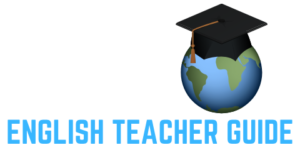
Before you go, check this out!
We have lots more on the site to show you. You've only seen one page. Check out this post which is one of the most popular of all time.
14 Engaging ESL Activities for Young Learners

Young learners are naturally inclined to creative lessons. It’s essential to keep ESL lessons fun and enjoyable while maintaining a robust educational standard.
Activities are designed to help students achieve a lesson goal. Rather than the teacher merely instructing students, activities require group participation. The outcome of every activity should result in students reinforcing their speaking skills and learning something new.
There are so many great activities that can help young learners practically use their English. These activities will enable them to speak the language confidently and prepare them for using it in the real world.
Role-play is the quintessential ESL activity. This activity requires students to either pretend to be someone or imagine a particular situation. Teachers can set up a role-play activity that mimics a real-life scenario, such as ordering from the supermarket or traveling in a foreign country.
Role-plays are great because it is the closest thing to using English outside the classroom. Students will experience using the language to converse with others without the anxiety of making mistakes since you are there to guide them.
Role-play gives students a chance to be creative and imaginative with their English, allowing personal growth in the language. Engaging with other students also creates a positive dynamic in the classroom. By creating an engaging, intellectually-stimulating simulation, students will be motivated to speak confidently. They will retain all the material taught in the study phase of the lesson.
Tips to prepare for a role-play activity
- Prepare the lesson beforehand. Make sure everything is set up correctly.
- Have a clearly defined purpose for the activity. Show students what they need to do to achieve the desired outcome.
- Allocate every student a role. If you’re giving them imaginary personalities, allow the student time to understand the nature of their character.
- As a teacher, it’s essential to take a facilitator role in this activity. Let the activity play out to see what happens. Don’t worry about correcting mistakes and help when needed. Make notes of any errors students make and use them to prepare a review lesson.
- Let the young learners enjoy and express themselves. This activity is the best way for all students to shine and build the foundation of their speaking skills.
Awesome ESL Role-Play activities
- Dining out at a restaurant
- Catching a taxi/bus
- Going to see a doctor
- Shopping in a supermarket
- Job interview

Pictionary is a great activity to practice vocabulary. All you need is a whiteboard, a marker, and a list of words.
- Divide your students into groups.
- Give one of your students the marker and a word from the list.
- The student will draw a picture, and their classmates will try to figure out what they are portraying.
- The student drawing must not say anything to disclose the answer. They must only draw.
- Each group will compete with each other over who gets more correct answers within the time limit.
Pictionary is an excellent way to reinforce your students’ knowledge of topics and vocabulary. Drawing and trying to guess the word that’s been given to them will help them visualize what they have learned in class.
This activity is fun, exciting, competitive, and engaging. Everyone has a turn at drawing, showing off some outstanding drawing skills!
Hangman is another whiteboard game to reinforce vocabulary.
- Think of a word and draw a line for each letter of that word on the whiteboard.
- Have your students raise their hands and try to answer either by guessing letters or the word itself.
- For each incorrect answer, draw part of the hangman.
- The student who guesses correctly before the hangman is drawn completely will be the next person to think of a word.
Bingo is an old game that works so well in an ESL classroom. It’s incredibly fun to play, and you can award your students prizes for winning. Word Bingo is an excellent activity for reading and listening skills. It will require students to focus on the activity.
Students will be given bingo sheets with English words written on them. The teacher will say the words that come out of a hat and the first student to complete a bingo pattern wins!
Music is an essential part of living language. Young learners love to sing, so using songs is a great way for students to use their voice and learn the rhythm of the English language.
The best way to conduct a singing session would be to have all students standing. You should develop movements to go along with the song to keep your young learners engaged and activated!
Recommended English songs for young learners
Maple Leaf Learning has a collection of cute and useful ESL songs for children. Some of their best hits are:
- How are you today? – Feelings and Emotions vocab
- How’s the weather? – Weather vocab
- I can see a rainbow –
Some great pop songs for ESL learning are:
- Take me to your heart – Michael Learns to Rock
- Everything at once – Lenka
- Something just like this – Coldplay
- Beautiful – One Direction
Hot potato is a fast-paced, vocabulary revision activity that will keep students engaged, excited, and focused. This activity is best suited for smaller classes.
Equipment needed for Hot Potato
- Music player
- An object for students to pass around (the potato)
- Flashcards with lesson vocab
Hot Potato Rules
- Gather all the students into a circle.
- Have the students pass each other the potato with music playing.
- When the music stops, the student with the hot potato must take a flashcard and read the word.
- The student must attempt to make a sentence using the word on the flashcard. If they make a mistake, they will sit out for the rest of the round.
- The student who’s left standing wins the round!
Variations of Hot Potato
A more relaxed version of Hot Potato would be to have pictures instead of words on the flashcards. Students will try to guess the word related to the image.
Advanced versions of the game may include having two hot potatoes. Students who have the potatoes when the music stops ask each other questions in English.

Surveys are a great way to lead the activate-phase of a lesson. Surveys will enable students to practice the four core skills of reading, writing, listening, and speaking.
An example of a great way to utilize surveys is during an ESL class about personal experiences. Teach students to ask the question, “have you ever…?” to their classmates and write down answers on a survey sheet.
Once the survey is complete, have each student introduce the person next to them with their fact.
“This is Lucy, and she has ridden a motorbike.”
“This is Arthur, and he has eaten an entire cheesecake by himself.”
This exercise allows the students to get to know each other better. It also encourages students to talk in English more and creates a more engaging classroom environment.
Simon Says is a quick activity that focuses on students listening skills. The game aims to give your students instructions using the phrase, “Simon says.” Students must only follow instructions followed by this phrase, and those who don’t are out! The person who is saying the instructions will try to trick students by talking faster. Students will have to focus hard to stay in the game.
- Organize the class into a circle. Explain the rules of the game.
- Start the game with an instruction using the phrase, e.g., “Simon says, touch your nose” and do the action.
- Gradually say the instructions more quickly and catch anyone who does the action without you saying, “Simon says.” For example, if you say “shake your hands,” any student who does the action is out.
- Keep playing until the last few students are left and then give out a small reward.
Two Truths and a Lie
This classic party game can be used by ESL teachers to encourage creative thinking in English in the classroom.
Have all the students form a circle and randomly pick one student to stand in the middle or front of the class.
The student will then say three statements, two of them being right and one being a lie. The rest of the class will have to try and guess which one is the lie. To do this, students will discuss the three statements with each other and try to guess.
Make sure that the class answers as one which encourages group discussion and careful thinking.
Alphabet Relay
Alphabet relay is a competitive activity that all young ESL learners can enjoy.
Start the game by writing the letters of the alphabet on the whiteboard and divide the class into teams. Choose a topic for the relay e.g., Countries around the world.
One member from each team will say the name of a country and wipe the first letter of that name from the whiteboard. For example, if a student answers with “Mongolia,” then the letter “M” will be erased.
Therefore, other countries starting with “M” (Mozambique, Myanmar, Maldives, etc.) cannot be used. When a student successfully wipes off a letter with a correct answer, their team is awarded a point. The team with the most points wins!
Other great topics for Alphabet Relay
- Cities around the world
- Jobs and Occupations
What’s the time, Mr. Wolf?
I’m sure you remember playing this back when you were in primary school. This fun game can be an excellent way for students to practice telling the time and take a break from bookwork.
This activity is best played in a park or court outside. Select one student to be the wolf and have them turn their backs on everyone. The class will start from a distance away and will ask, “What’s the time, Mr. Wolf?”
The wolf will then respond with a random time. If the wolf says, “It’s six o’clock,” everyone will take six steps forward. This process repeats until the wolf responds with “it’s dinner time,” which is when they will chase the class and catch someone.
Students that are caught become wolves themselves, and the last person to survive wins!
Creative Writing

Creating writing is an excellent way to give young learners a chance to express themselves. Creatively using a language is what builds confidence and fluency.
Young learners will need to be guided on creative writing. A good creative writing session will have the teacher setting up a blueprint. Give your students a theme and setting based on the topics learned in class. Explain to them the key elements of writing a great story and give them a minimum word limit.
Although they may be shy to write something compelling at first, you’ll find that young learners are extraordinarily creative and imaginative. You might have the next JK Rowling in your class!
Creative Art
Another way for young learners to express their knowledge of English is through artwork. Art can be used to help students visualize the vocabulary they have learned in class.
Students can draw or paint pictures based on what they have learned in class. They could also present their artwork to their classmates, which will reinforce their confidence in speaking.
Creative art can also be a great way to develop a teacher-student relationship. You should walk around the class and engage with your students, asking them about their artwork and what they think about it.
I Spy is a stimulating activity that requires participants to locate something in the room based on a clue given by the teacher or another student. This game is excellent for young learners to practice their vocabulary and knowledge of topics such as colors and sizes.
For example, when the teacher says, “I spy something beginning with B,” the students will try to find something in the classroom beginning with this letter.
You may also say, “I spy with my little eye, something that is green,” and students will subsequently try to find a green object.
Write a Bucket List!
This simple ESL activity asks learners to write a list of things they want to do in their life. It’s a great way to teach students how to express a desire to do something in English using “I want to.”
Students will write out a list of things they want to do or things they have already done. Once finished, classmates can share what they have written with each other and engage in an open discussion about what they wrote.
Teachers can ask why students want to do certain things, which helps them start to think in English.
Activities are a crucial part of the ESL learning experience. Students need to practice what they’ve learned every lesson to reinforce their knowledge and maintain interest in the class. These are just some of the hundreds of ESL activities that you can start using in your classroom today!
This site is owned and operated by AJM Laird. EnglishTeacherGuide.com is a participant in various affiliate programs designed to provide a means for the site to earn advertising fees by advertising and linking to products. We are compensated for referring traffic and business to these affiliate partners and other companies linked to on this site.
Teacher Aidan
Recent Content
Which Countries Pay ESL Teachers the Most?
Teaching English abroad is an excellent way to travel and see the world. You'll be paid a decent salary, and your employer will offer you many benefits. How much you can potentially earn,...
15 Reasons Why You Should Teach English Abroad!
Have you ever dreamed of living abroad? I'm sure you've seen videos on the internet of people having the time of their lives in countries like Japan, Korea, Russia, Spain, and many...

Learning fun!
Creative Writing Activities for Young Learners
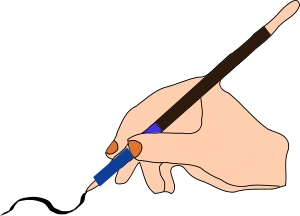
Story Building
2 famous people
Pre-reading warmer
Leave a reply cancel reply.
Save my name, email, and website in this browser for the next time I comment.
This site uses Akismet to reduce spam. Learn how your comment data is processed .
Recent Posts
- 18 Dice Games for the English Classroom
- 12 Halloween Activities for your ESL Classes
- ESL Christmas Worksheets and Printables
- St Patrick’s Day Quiz
- Learning Names

IMAGES
VIDEO
COMMENTS
This narrative writing activity can teach students to write events clearly and in sequence from their real life. 12. For a creative writing project that's just plain fun, try this Roll a Story activity. 13. This nonfiction project helps children learn to write a letter as they write to a loved one of their choice. 14.
Reaping the benefits. To see how creative writing impacts students, I invite them to rate their resilience through a self-compassion survey at the start of the school year and again in the spring. Last year, two-thirds of students surveyed increased in self-compassion; Alejandro grew his self-compassion by 20 percent.
By figuring out what elements make stories great, this is sure to help them in their own creative writing assignments! Learn More: Little Lifelong Learners. 33. The Best Part of Me. Probably my favorite creative writing activity, this one is infused with social-emotional learning and self-esteem building!
Presenting the story. Using your chosen story sample from above, present to the class the title and some images from the story. If you are using an actual book as an example. start the presentation with the title as well as the cover. Encourage the class to be imaginative- ask the children to predict what the story is going to be about.
Use games. There are numerous games and puzzles that help children with spelling while increasing their vocabulary. Some of these may include crossword puzzles, word games, anagrams, and cryptograms designed especially for children. Flash cards are fun to use too, and they're easy to make at home. Turn your child's writing into books.
Authored by Janine Henley, this blog post offers 15 essential resources for elementary educators to enhance their writing curriculum and instruction. From webinars to books and podcasts, each resource is carefully selected to empower teachers, literacy coaches, and reading specialists in cultivating proficient writers in their classrooms.
2. Peer writing. This is an activity children love doing, as they are allowed to work in pairs. They need to already know how to use the past simple and past continuous tenses to tell a story. First, you give the students a sheet of paper with two columns of sentences about a young couple who met years ago.
Here are some ideas for getting your teenage learners started with their creative writing, and practical activities to inspire their writing. Show menu. ... Poetry can be great for young or low-level learners, since there are several short and simple forms of poetry you can use. For example, cinquains, haiku, ...
Student One will pick the location, say library, then Student Two pick the object, say books. That gives us the sentence: "Tim is going to the library because he wants to eat books .". The grammar is correct, the vocabulary is in its correct place but the meaning is silly, so everyone gets a laugh. 5. Shared Writing.
Writing and Young Learners Writing can be an engaging, interesting and inspiring activity for young learners. Children are active learners and thinkers (Piaget 1965), learn through social interaction (Vygotsky 1978) and learn effectively through scaffolding by more able others (Maybin et al 1992), who can be adults or peers. Collaborative and well-planned writing tasks encourage the context ...
In my recent webinar: Engaging young learners in meaningful, successful (and fun!) writing activities, I presented the following activity. For this story (which is actually 3 of the 5 pictures from a speaking story) from Fun for Flyers 4 th edition, Student's Book page 79, I wrote the following words: To take part in the activity, candidates ...
Writing is like a muscle — it takes practice to build up skills. Luckily, we put together a list of over 200 writing prompts to help your students get started. We've also organized them by middle school, high school and elementary school to help teachers decide whether these prompts are age-appropriate for their students.
Creative Writing Prompts for Young Learners Objective. Students in grades 3 to 7 will enhance their creative writing skills by exploring a variety of writing prompts and crafting imaginative and well-structured stories. Target Audience. Grade Level: Grades 3-7 (Ages 8-13) Duration.
By the end of this lesson, young learners will be able to: Understand the concept of creative writing and its role in expressing imagination and ideas. Explore various forms of creative writing, such as short stories, poems, and descriptive paragraphs. Develop their creativity and imagination through engaging writing prompts and activities.
In this section you can practise writing different types of texts with an example to help you. Read, write, play games, print activities and post comments! ... Read, write, play games, print activities and post comments! For learners at level 1. Level 2 writing. Read, write, play games, print activities and post comments! For learners at level ...
Creative writing activity ideas. 1. Group stories. This creative writing activity encourages learners to work together and use their imaginations to come up with unique and creative stories. Put students into small groups of 4 or 5 and have them arrange themselves into a circle. They each need a pen and a piece of paper.
This motivation to write a narrative story was translated into motivation to use English because the students were putting into words their creative ideas. Not only did they learn new vocabulary items and grammar structures, but they also recycled ones they knew. The students wrote their first Storybird story at school.
1. Encourage creativity over perfect use of language and punctuation. Point out strengths more than weaknesses, and perhaps have focused areas of improvement rather than correcting every mistake. Peer review can help students to discover their more common and obvious errors, allowing teachers to focus more on the creative and narrative side. 2.
Most often, such texts take the form of poems or stories, though they are not confined to these genres. (Letters, journal entries, blogs, essays, travelogues, etc. can also be more or less creative.) In fact, the line between creative writing (CW) and expository writing (ER) is not carved in stone. In general, however CW texts draw more heavily on intuition, close observation, imagination, and ...
3. Help students write down what they have said. For young writers, this often means that you will do much of the writing at the very beginning. You write down the sentences that your students use to describe their pictures. Then you can have the students trace the sight words or the key vocabulary.
Teaching writing for young learners (YL) needs unique strategies from each teacher. The purpose of this study is to help teachers explore strategies for teaching writing for young learners. The ...
IMPROVING CREATIVE WRITING FOR YOUNG LEARNERS USING CTL POST COVID 19 Elli Setiyo Wahyuni, Deasy Arieffiani Universitas Hang Tuah [email protected], [email protected] Abstract The research aims to implement contextual teaching and learning approach in writing skill which is integrated in the lesson plan. This is a case ...
Creative Writing. Creating writing is an excellent way to give young learners a chance to express themselves. Creatively using a language is what builds confidence and fluency. Young learners will need to be guided on creative writing. A good creative writing session will have the teacher setting up a blueprint.
Pre-reading warmer. Method 1. Before reading a text give students five key words or aspects from the text they are going to read. 2. Get students to draw each word and give them 10 seconds per word. 3. In groups, students predict what the story is about and then write a short story using their predictions. 4.